

Tao Te Ching

Women of Wisdom Lineage
History may be written by the most-often male victors but the force of real change, of consciousness evolution more often originates behind the scenes in the potent but unseen dark corners of day-to-day life and the subtle but influential being rather than the doing of events. And even as the more famous people on this list, more known to history but often faded into more obscurity by their male but less influential contemporaries, this deeper influence vividly effects our lives today.
“Who shall be fairest? - who shall be rarest?
Who shall be first in the songs that we sing?
She who is kindest when fortune is blindest,
Bearing through winter the blooms of the spring.”
- Charles Mackay (1814-1889)
“the absence of feminine symbolism for God marks Judaism, Christianity, and Islam in striking contrast to the world’s other religious traditions… ‘God the Mother’ on an equal footing with ‘God the Father!’ ” — Elaine Pagels (1943- ) Gnostic Gospels
“Beautiful young people are accidents of nature, but beautiful old people are works of art.” — Eleanor Roosevelt (1884-1962)
“Being a woman is a terribly difficult task, since it consists principally in dealing with men.” — Joseph Conrad
“Blessed is the breath that woman draws.” — Euripides (480 – 406 BC)
People (149)

Nüwa 女媧
c. 3500 BCE
Symbol for all the wise and influential women of ancient times
The first Chinese heroine and credited with saving mankind during a time of great catastrophe, Nüwa’s story goes back to the era when China was a matriarchal society. Though probably not an historical figure, we include her here as a representative of the feminine wisdom lineage. Because “history is written by the victors” and men have written most of history, it’s hard to find ancient female wisdom holders. Nüwa symbolizes all the wise and influential women of olden times.

Leizu 嫘祖 (Léi Zǔ or Xi Lingshi)
27th century BCE
Legendary Chinese empress, inventor of silk
A legendary Chinese empress and wife of the Yellow Emperor, Huangdi, Leizu is credited with discovering silkworms when she was having tea and a cocoon fell into her tea. She then learned how to make silk, invented the silk loom, and taught women how to breed silkworms and weave silk fabrics. She was instrumental in helping her husband establish one of the world’s greatest golden ages. China maintained a monopoly on silk production for thousands years and it only spread to Japan c. 300 CE, to the Byzantine empire in 522 CE, and not to Western Europe until the 16th century.
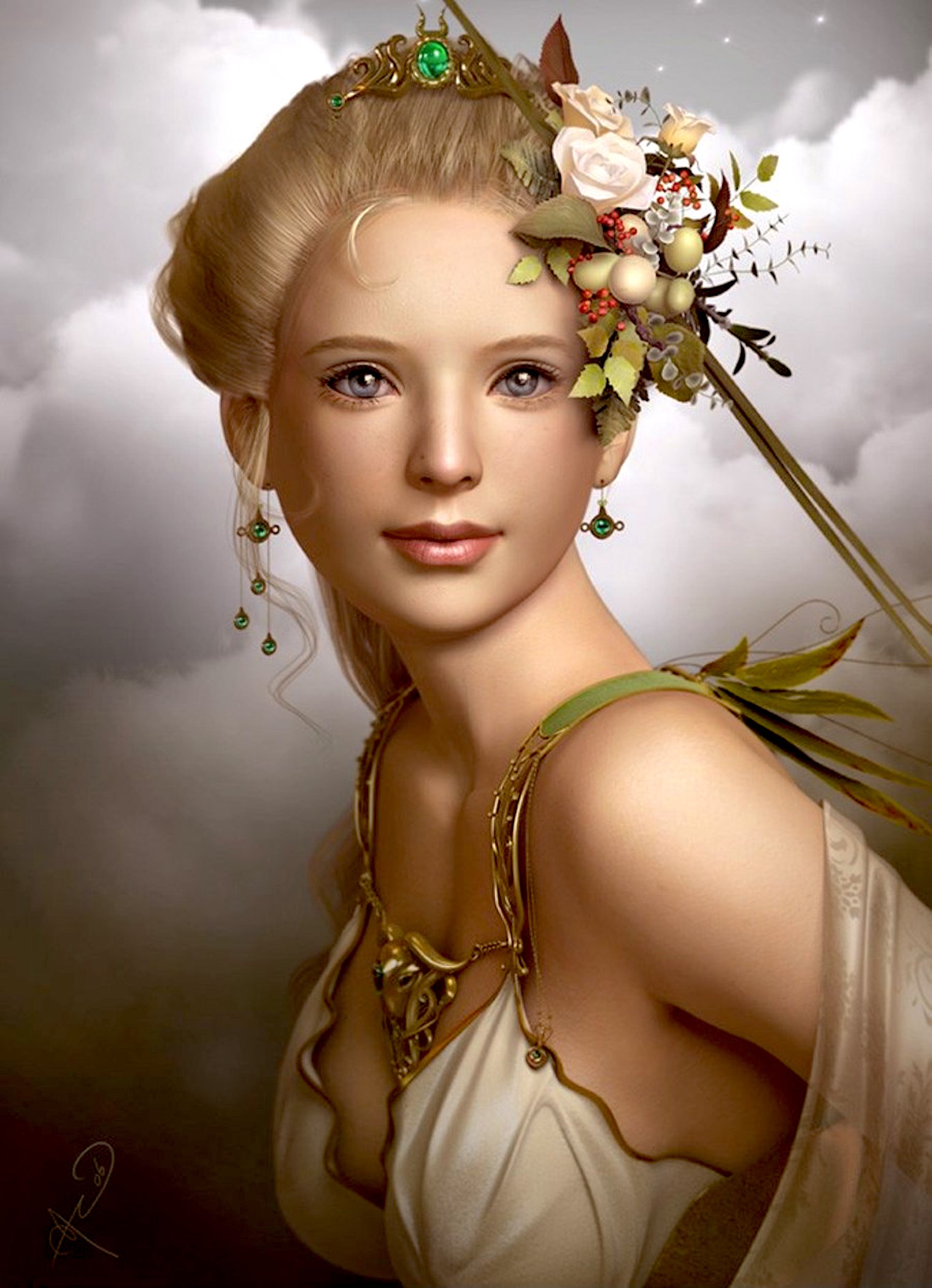
Demeter (Ceres)
c. 2500 BCE
Eleusinian goddess, discoverer of agriculture
“Where smoke, there’s fire” and where a god or goddess, probably real people beginning the symbolism. Like Shennong in China, the Greeks credited Demeter with the discovery of agriculture and like the Chinese Nüwa as the transition from matriarchal to patriarchal society. Assuring fertility with mystic rites and social order as "Law-Bringer;” she predates the Olympian pantheon and with her daughter Persephone is central to the Eleusinian Mysteries, a holy, psychedelic communion celebrating birth, death, and resurrection giving (along with the Egyptian belief in immortality) to Christianity a “weapon with which to conquer the Western world” (Durant).
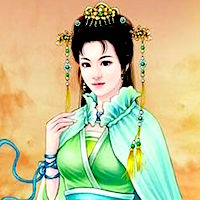
Jiǎndí 帝喾
2436 – 2386 BCE
“The emperor 's emperor,” patron of merchants
Wife of Yellow Emperor descendent Ku, mother of Qi, the Shang dynasty pre-founder; Jiandi headlines Chinese myths as well as historical accounts. In a myth, she miraculously becomes pregnant after swallowing a bird’s egg which leads to the birth of Qi and helps legitimize the founding of the Shang dynasty. She studied astronomy, good government, and influenced rule based on reason and creating more benefit for others. Described as “the emperor 's emperor,” she became a patron to merchants and her symbol was worn by businessmen for over 600 years.
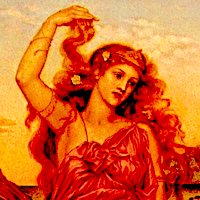
Semele Σεμέλη
c. 2000 -1970 BCE
Early Greek Virgin Mary
Early prototype for the Virgin Mary, “earth mother,” daughter of Cadmus, the first Greek hero, founder and first king of Thebes; Semele gave birth to the early Jesus-figure, Dionysus who was born on December 25th, changed water into wine, was the son of god and a mortal woman, died and resurrected after 3 days. Worshipped by the Athenians, in Roman mythology, she became the goddess Stimula, in Neoplatonic philosophy she personified “intellectual imagination,” and during the Enlightenment became a popular theme for operas. Incinerated because of seeing too deeply into the nature of a god, she represents the Icarus-principle of hazards from too much of a good thing.
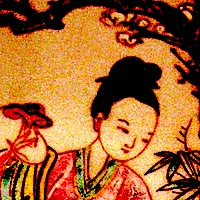
Queen Mother of the West 瑤池金母 (Wang Mu, Niang Niang)
1766 – 1666 BCE
Feminine principle embodiment
Symbol of matriarchal preeminence, feminist role model, Taoist goddess of fertility and life, embodiment of Yin femininity, bringer of longevity, prosperity, and bliss; Wang Mu refused to submissively bow down to male superiority and disdained the typical Chinese attitude of always wanting male children, being disappointed with female births. Mythologized throughout Asia, she became an inspiration for women in China, Viet Nam, and Korea who had trouble passively following in the expected patriarchal role models. Although sited in accounts more than 1000 years before Lao Tzu’s time, she became one of the most popular symbols in Taoist tradition and—in at least one account—inspired and ultimately wrote with him the Tao Te Ching. Her influence and popularity continue today in many parts of the world and she is venerated in the Taoist Shangqing School.
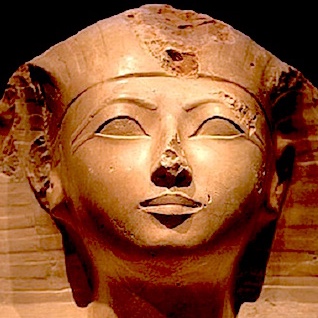
Hatshepsut (Hatasu)
1507 – 1458 BCE
"The Queen Elizabeth of Egyptian History"
Called by historians "the first great woman in history” and “one of the most powerful women in the history of the world,” Hatshepsut was also one of the most successful and compassionate pharaohs and set the stage for the zenith, the most golden age of Egyptian culture. Credited with the first transplanting of foreign trees, the first use of resin (making a kohl eyeliner), and one of the most prolific builders; she made the tallest surviving ancient obelisk on Earth, buildings not rivaled for a thousand years, and so many statues that almost every major museum in the world includes them.
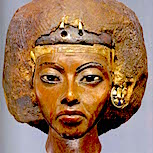
Queen Tiye
1398 – 1338 BCE
First proponent of monotheism
Royal Wife of pharaoh Amenhotep III, mother of Akhenaten, and grandmother of Tutankhamun; little known Queen Tiye changed history by proclaiming for the first time a single god and inspiring the monotheism of Moses. A foreign-born, legendary beauty of black descent with a powerful, wise personality; she was worshipped as a goddess and helped rule Egypt for 37 years bringing her country to it’s highest point of international power and prosperity while creating a revolution and peak in Egyptian art.
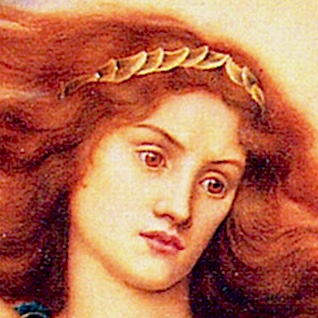
Cassandra
12th C. BCE
Oracle of Crazy Wisdom
Symbol of the wisdom that’s hard to hear or difficult to practice when we do hear it, Cassandra also represents the disastrous consequences of not listening to that wisdom. Like her, many of the lineage holders on this list during their lifetimes were thought crazy, subversive, completely wrong and were only believed and respected much later. She personifies the intuitive, artistic, open approach to life in balance with Apollo’s linear emphasis on clear definitions, order, and superficial understanding of just the words, not the sense. We see both of these principles magnified today in politics and environmental debate, in all our forms of individual and social denial.
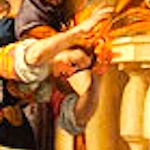
Lavinia
12th C. BCE
Prophetess and co-foundrer of the Roman Empire
Probably a legendary figure but “where there’s smoke, there’s fire” and Lavinia’s symbolic meaningfulness rates her place here. Co-foundress of the Roman Empire, prophetess, daughter of a king, wife of Aeneas, made famous by Virgil, Dante and Ursula Le Guin; Lavinia helped continue the Trojan traditions and ruled “behind the throne” for her too-young-to rule son with Aeneas, Ascanius whose progeny Romulus and Remus established Rome. She represents convergence and appreciating diversity rather than allegiance to narrow sectarianism. The symbol of her hair catching on fire foreshadows both the brilliance and violence of the Roman empire.
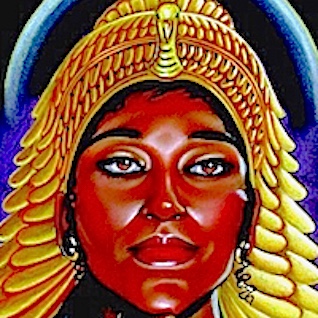
Makeda, Queen of Sheba (Bilkis, Rainha de Sabá)
10th C. BCE
Embodiment of Divine Wisdom
Viewed as the embodiment of Divine Wisdom in the Kabbalistic and mystical Christian traditions, immortalized in the Hebrew Bible and the Muslim Koran, in Persia considered a daughter of a Chinese king and a fairy spirit, part of the founding myths for the modern states of Israel and Ethiopia; Makeda is the first person referred to as Queen in the Bible and ruled over Upper Egypt, Ethiopia, and parts of Arabia. Extremely wealthy and known as a wise prophetess, she challenged Solomon’s wisdom and later had his son, Menelk who became the first emperor of Ethiopia.
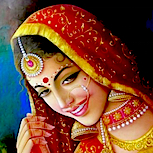
Maitreyi
c. 7th century BCE
Symbol of enlightened feminine principle
A symbol for Indian intellectual women, "one of the most learned and virtuous women of ancient India,” poet, philosopher, and wife of the great sage, Yājñavalkya; Maitreyi studied, debated, taught metaphysics and wrote 10 hymns in the Rigveda, one of the four Hindu canonical sacred texts. Her dialog with Yājñavalkya in an Upanishad formed the foundation for Advaita, the oldest school of Vedanta that teaches and gives practices to help realize non-duality. In this dialog, her challenge to the male guru shows the equality of women in ancient India and inspires that realization today - a college in New Delhi is named after her.

Sappho
612 – 570 BCE
“The Poetess” and most famous Greek woman
The most beautiful singer of her age, a political force when only 19, one of the great “Nine Lyric Poets” of ancient Greece, called by Socrates, “The Beautiful,” by Plato the Tenth Muse, and “the Poetess” by all the Greek world; Sappho is the most famous Greek woman. In fear of her pen, politicians banished her twice and her poetry continued to inflame autocratic leaders for centuries – even Medieval Church leaders in Rome and Constantinople tried to burn all her 9 volumes of poetry in 1073 and remaining scraps of these weren’t found until 1897, some not until 2014. She started history’s first “finishing school” for girls and lived “laughing love’s low laughter… lost in the love trance."
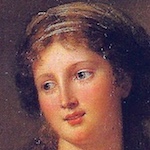
Aspasia
470 – 400 BCE
A female Socrates and dramatic influence on Western culture
An hetaera, a highest class courtesan who – unlike most women of the time - was highly educated, independent, and able to participate in public life, Aspasia became Pericles’ mistress and a dramatic influence on Greek politics, philosophy and culture. Her home was an intellectual greenhouse attracting the greatest thinkers of the era and her teachings influenced Socrates, Plato, Xenohon, and many more. Intelligent, beautiful, charming, and called a "female Socrates;” she taught realization through self-knowledge and although a prostitute, her advise was so respected influential Athenians brought their wives to hear her.

Lais of Corinth
fl. 425 BCE
Described by Athenaeus as “superior in beauty to any woman that had ever been seen,” Lais typifies the Greek penchant for blending philosophy with prostitution. Although so desirable would-be clients would offer her all their wealth and possessions for a single night; she was so wealthy she would often refuse the most lavish offers. Her love of philosophy led her to offer herself to philosophers like Diogenes for a wee bit and gave the ugly Demosthenes great honor and fame by offering him 10,000 drachmas for an evening. She used her great wealth for the common good helping worthy people and building public structures and temples. Honored with a great tomb when she died, Lacroix described her as “the greatest conqueror that the Greeks have ever known.”
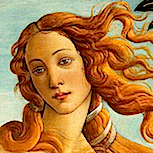
Phryne
371 - c.310 BCE
Model for the most famous sculptor of the time, Praxiteles and the first life-size statue of the nude female form; Phryne’s habit of letting down her hair and swimming naked in the sea during Elusion festivals inspired Apelles’ famous painting of Aphrodite as well as Botticelli's famous Birth of Venus. Her success as a hetaira courtesan made her so rich she was said to offer funding to rebuild the walls of Thebes destroyed by Alexander the Great if the words "Destroyed by Alexander, restored by Phryne the courtesan" were inscribed on them. Apparently too much to ask, this led to a charge of “impiety” at a trial where she was vindicated and found not guilty after baring her breasts.
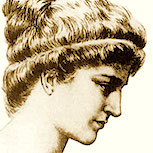
Hipparchia ππαρχία (of Maroneia)
350 – 280 BCE
Cynic philosopher and the only women on Diogenes Laërtius' list of eminent philosophers, Hipparchia influenced Zeno's views on love and sex, on the founding of Stoicism. She fell in love with her teacher, the most famous Cynic of the time, Crates; and going against her parents, married him to live a street-life of poverty. Going far beyond what was considered acceptable for women, she wore men’s clothes and living on equal terms with her husband became a symbol for rejecting conventional values and thinking for yourself. Rejecting the conventional roles for women in favor of philosophy, she left her rich family, became a beggar, consummated her relationship with Crates in public, and with him epitomized unwavering fidelity and deep affection.
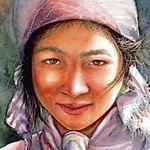
Chang-shih
4th century CE
Though little known by history, Mencius’ mother Chang-shih became an exemplar in Chinese culture for good parenting and is immortalized in an idiom know by almost all Chinese speakers. A wise and dedicated single mother, she moved her home 3 times searching for the best educational environment for her son – once because he was being too influence by funeral rites, once because the influence was business, and finally settling near a good school. Her wisdom continued during Mencius’ later life once famously changing his attitude from blaming and planning to divorce his wife to accepting the blame himself.
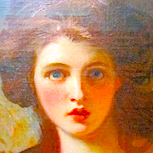
Leontium Λεόντιον (Leontion)
fl. 300 BCE
Philosopher, courtesan and mistress to Epicurus; Leontium had a child with him, helped develop his Epicurean philosophy, and wrote several books. Praised by Epicurus for the clarity of her philosophy and writings, she encouraged his policy of letting women and slaves attend his classes, and was a scandal to philosophers like Leontium and Pliny for - as a woman and prostitute - writing an erudite and devastating criticism of famous philosophers like Theophrastus. Barely mentioned in history and mainly by Epicurean critics who blamed her for her influence on ideas they disagreed with, Leontium helped create a more open and happy world.
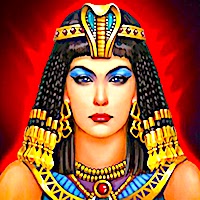
Cleopatra Κλεοπᾰ́τρᾱ Φιλοπάτωρ (Cleopatra VII Thea Philopator )
69 – 30 BCE
History’s most famous femme fatale
Egyptian pharaoh, naval commander, linguist, diplomat, medical author, and one of history’s most famous femme fatales; Cleopatra was actually known to have had only two lovers, Julius Caesar and Mark Antony. These were the two most powerful leaders of the time and consequently the two most likely to save her struggling, precarious dynasty. This strategy came close but failed and after her death, Egypt became a Roman province. Cicero knew her personally and—along with Virgil, Horace, and Ovid—described her negatively. This, at least in part, was a result of history being written by the victors and Egyptian sources like the Libyka give her more praise and respect. Even Plutarch was more positive and described her influence as based more on personality and charm more than just beauty. A descendant Ptolemy I, a Macedonian Greek general and companion of Alexander the Great, her story comes down to us today through the perspectives of luminaries including Chaucer, Shakespeare, George Bernard Shaw, Chinese scholar Yan Fu, Elizabeth Taylor, 43 movies, 200+ plays and novels, 45 operas, and 5 ballets.

Mary of Magdala
3 BCE – 120 CE
Called the ”Apostle to the Apostles" by the 3rd century theologian Hippolytus, the story of Mary of Magdala resembles that of Mahākāśyapa – the only one of the Buddha’s disciples to understand the Flower Sermon. In the Gospel of Mary, she was the only disciple to understand Jesus’ inner teachings about basic goodness, discovering the truth within ourselves rather than an external authority, the dangers of following charismatic leaders and sets of rules and laws rather than the wisdom within.
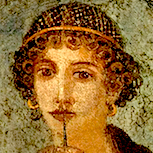
Hypatia
350 – 415 CE
Greek female philosopher, physicist, astronomer, mathematician, and head of a Neoplatonic tradition living and teaching in Egypt; Hypatia was known as a symbol of virtue even by many Christians who thought of her as far above the other philosophers of her own time. Considered the first famous "witch" tortured by Christians whose leader was later sainted, historians mark her murder by this mob as the end of Classical antiquity, the downfall of Hellenistic philosophy. Famous through history and referred to by historians, philosophers, feminists, scientists, and novelists; she is still popular today and associated with names like Marcel Proust, Carl Sagan, Umberto Eco, Dr. Who, and modern movies like Rachel Weisz’s 2009 Agora.

Hua Mulan 花木蘭
386 – 534 CE
Considered by some historical, by others a legendary figure; either way, through much of modern Chinese history Mulan inspired women, poetry, essays, operas and paintings. To save her father, she pretended to be a man so she could take his mandatory place in the army fighting against the Mongols invading China. Since the earlier, matriarchal time of Fuxi and Nü Wa, this was one of the first examples of Chinese gender equality. During her 12 years in the army she turned down numerous distinctions, titles, and rewards for her successes and chose instead a return to a quite life at home.
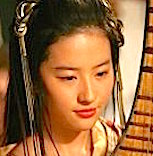
Arya Prajnadhara
5th century CE
27th Zen Patriarch, one of the few women Zen lineage leaders, and teacher of Bodhidharma; details about Arya Prajnadhara’s life are rare and difficult to find. Because of being a woman Patriarch in this predominantly male tradition and because of encouraging Arya Bodhidharma’s travels to China; although being almost completely unremembered by history, she had a huge influence on the evolution of Buddhism. Since her main disciple moved to China and Chán Buddhism mixed with Taoism, this influence in India diverted into the Maha Siddha tradition, spread to Tibet as Vajrayana, and reunited with Chán as Maha Ati or Dzogchen.

Abbakka Chowta (Rani Abbakka Chowta)
504 – 573 CE
First Indian, woman freedom fighter
“The fearless queen,” Jain sage, warrior, and “first woman freedom fighter of India;” Abhaya Rani was one of the first to resist European colonial attacks. She skillfully fought against the Dutch and British as well as preventing the Portuguese from capturing Ullal several times. Along with fellow Jains, she included Hindus and Muslims in her administration, people from all sects and castes in her armies. Betrayed by an estranged husband, she was finally captured and imprisoned; but, she didn’t give up, broke out, and died fighting. More than 500 years now after her life, she is still revered and celebrated throughout India with stamps, statues, roads, ocean vessels, and festivals named after her.
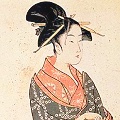
Empress Suiko 推古天皇 (Suiko-tennō)
554 – 628 CE
Emperor’s daughter, Buddhist nun, first and only confirmed Japanese Empress Regnant of Japan; Suiko’s many achievements include adopting a more useful calendar cycle, the 17-article constitution (written by Shotoku), and the official recognition of Buddhism by the issuance of the Flourishing Three Treasures Edict in 594. She was one of the first Buddhist monarchs in Japan, sponsored Buddhist temples and monasteries, and firmly established Buddhism in Japan. She orchestrated China’s first diplomatic recognition of Japan and close cultural contact with both China and Korea.
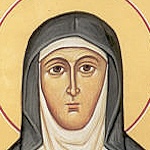
Hilda of Whitby
614 – 680 CE
Living in a brutal time of violent warlords and kings, Hilda’s mother was a poor, homeless widow. From this humble and challenging beginning, she became a powerful advisor to officials, bishops, and kings. The historian Bede wrote, “All who knew her called her mother because of her outstanding devotion and grace.” Abbess and founder of several monasteries, five men who lived and studied at one of these became bishops and two of them are now revered as saints. She is considered a patron saint of poetry, learning and culture.

Wu Zetian
624 – 705 CE
In more than 4000 years of Chinese history, Wu was the only female emperor (not just consort or dowager). Historians accused her of violent acts - murder, torture and corruption; but this may be history being re-written by the victors, later Confucian successful attempts to discredit her and the feminine equality she promoted. She made the Tao Te Ching required reading for imperial university students and continued the Tang tradition of claiming Laozi as a clan ancestor. She supported self-sufficient farmers and ensured fair land allocations. Three of her sons also became emperors and one of her grandsons became the renowned Emperor Xuanzong of Tang.
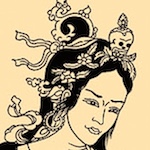
Lakshmincara ལཀྵྨཱིངྐ་རཱ།། (“The Princess of Crazy wisdom”)
c. 8th Century CE
Born into a royal family and pledged as a wife to the king of Ceylon, when Lakshmincara saw the king for the first time hunting and killing animals, she gave away her large dowry to the common people, pretended madness to stop the wedding, and moved to the charnal grounds to practice and realize enlightenment. She survived on food thrown out for dogs and took an untouchable latrine cleaner as attendant and first student. She became famous with many disciples. Her former fiancé’s father, the king Jalendra also wanted to become a disciple but she instead referred him to her student, the latrine sweeper who became his teacher. Mahasiddha #82
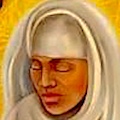
Rabia Basri رابعة العدوية القيسية (Rābi‘a al-‘Adawīyya)
714 – 801 CE
Muslim mystic, “queen of saintly women,” and most important early Sufi poet; Rabia Basri rose from the poverty and slavery of her youth to become the most famous and influential Sufi woman of Islamic history known as “the queen of saintly women.” She had many disciples and became an important influence on the leaders of her time as well as an early voice against spiritual materialism and Islamic patriarchy. She taught a doctrin of Divine Love known as Ishq-e-Haqeeqi that is still practiced today and emphasized spiritual practice without desire for reward or fear of punishment.
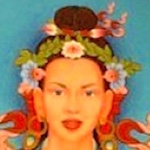
Yeshe Tsogyal ཡེ་ཤེས་མཚོ་རྒྱལ (Sky Dancer)
777 – 837 CE
Believed to be the reincarnation of the Buddha's own mother, Yeshe Tsogyal is the most famous of the enlightened women of Tibet and considered a female Buddha manifesting in the world in a way to teach an enlightened path in everyday life. She appeared as ordinary girl, princess, prostitute, business woman, and enlightened guru. Given from the king, Trisong Detsen’s harem to Padmasambhava who freed her, she helped establish Buddhism in Tibet and concealed terma for future generations.
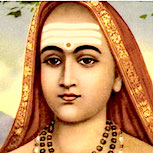
Adi Shankara
788 – 820 CE
Philosopher, theologian, and sage; Shankara unified and established the main philosophical trends in Hinduism. He criticized the dogmatic and ritually oriented schools, emphasized that enlightenment can be realized in this lifetime, and established monastic, personal-practice and direct-experience traditions. Writer of fundamental texts of the Vedanta school and responsible for a major Hindu revival, he is called the source of all the main currents of modern Indian thought. His teachings are similar to Mahayana Buddhism and he was called a "crypto-Buddhist" but he explained the difference being the Buddhism teaching of no self and his that the whole universe is the self - which may be a way of saying the same thing.
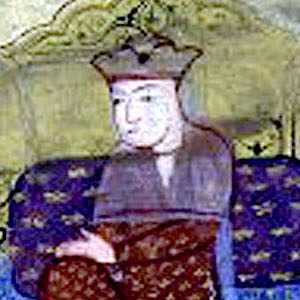
Alan Gua (Алун гуа)
832 – 884 CE
"Alun the Beautiful"
Living ten generations before Genghis Khan, Alan Gua is credited with forging the original Mongol clans together when she taught her five sons the parable of the five arrows showing them how easy it is to break one arrow but how impossible when the five are bound together. This image was powerful enough to overcome her first two son’s suspicions and jealousy when she had three more sons after their father died and explained the new births as a result of a heavenly, “glittering visitor” who came through her yurt’s roof on moonbeams “like a yellow dog.” This story/image transmitted from the Mongols to the Iroquois Confederacy through Deganawida and Hiawatha and to the US Founding Fathers becoming incorporated as the Great Seal of the United States and the same essential message into the US Constitution.
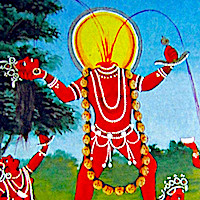
Mekhala མེ་ཁ་ལཱ། (“The Elder Severed-Headed Sister” )
late 9th century
Mahasiddha #66
One of two unmarried, mischievous daughters; Mekhal’s father married her off to an unsuspecting boy from another village. He soon realized though and an intense and constant “battle of the sexes” began. As their lives sunk into more and more misery, the younger sister—Kanakhala—suggested running away to another country. Mekhala, however, realized that their problems were self-created and would follow them wherever they travelled. This realization somehow seems to have triggered an encounter with a famous guru who initiated them onto a spiritual path. After 12 years, they returned to the guru but brought no offerings. According to the story, the guru asked for their heads and they immediately cut them off with “the keen-edged sword of pure awareness.”
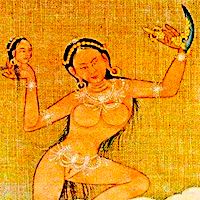
Kanakhala ཀ་ན་ཁ་ལཱ། ("The Younger Severed-Headed Sister”)
late 9th century
Mahasiddha #67
One of two unmarried, mischievous daughters; Kanakhala’s father married her off to an unsuspecting boy from another village. He soon realized though and an intense and constant “battle of the sexes” began. As their lives sunk into more and more misery, she suggested running away to another country. Mekhala, however, realized that their problems were self-created and would follow them wherever they travelled. This realization somehow seems to have triggered an encounter with a famous guru who initiated them onto a spiritual path. After 12 years, they returned to the guru but brought no offerings. According to the story, the guru asked for their heads and they immediately cut them off with “the keen-edged sword of pure awareness.”
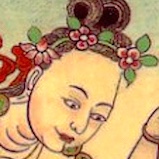
Manibhadra
10th C. CE
One of the 84 Mahasiddhas in the Tibetan Buddhist tradition and described as the “Happy Housewife’ siddha” and “Model Wife,” Manibhadra as a teenager met her teacher Kukkuripa and bravely followed him into the cremation grounds where she began practicing Vajrayana. Instead of leaving the conventional world to practice though, she married, had children and brought her spiritual practice into her daily life demonstrating the sacredness and enlightenment in the simple, ordinary world and becoming an exemplar to householders.
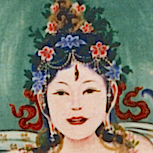
Dharima
10th century CE
Prostitute, consort of the famous Mahasiddha Tilopa, slave owner and student of Mahasiddha Luipa (probably a different person with same name and profession); Dharima and Tilopa started on this spiritual path together, practiced together for many years, and when enlightened taught together. They learned the "Illusory-body" yoga from Nagarjuna’s tradition, Dream yoga from Caryapa, Cakrasamvara and the Clear Light from Lavapa, and from the woman saint Subhagini, Candalini-yoga and the Hevajra tantra. They forged these 4 traditions into what became the Kagyu lineage of Mahamudra that continues powerfully today through teachers like Chogyam Trungpa and the Karmapas.

Cao Daochong 道寵 (Daochong or Ts’ao Tao-Ch’ung)
fl. 960 - 1268
Mysterious Taoist nun during the Tang Dynasty, Cao Daochong walked in Lao Tzu’s footsteps of inscrutability and disregard for fame and fortune. Though unassuming and humble, her deep insight, wisdom, and compassion speak through the centuries through her book, the Lao-tzu-chu. Living during the time of the great Mahasiddhas in India, Naropa and a major transmission of Buddhism into Tibet, she was a contemporary of other great women teachers like Dharima, Manibhadra, Niguma, Arwa al-Sulayhi, Heloise, and Hildegard of Bingen.
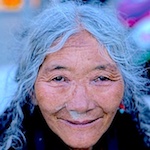
Niguma
11th C. CE
“Dakini of timeless awareness,” co-founder of the “secret lineage,” the Shangpa Kagyu school of Vajrayana Buddhism, wife and later disciple of mahasiddha Naropa, teacher to Marpa the translator; Niguma wrote 13 books basic to the Tibetan Buddhist tradition and had a deep and continuing influence on the foundations and practices of Buddhism in Tibet and other countries. One of the most important and influential teachers of her time, she established a complete set of spiritual practices called the Six Yogas of Niguma that is still practiced, studied and greatly appreciated today.
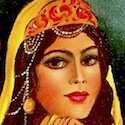
Arwa al-Sulayhi (Al-Malika al-Ḥurra)
1048 – 1138 CE
The stellar example in Muslim history of an independent queen; Arwa ruled Yemen, was the greatest leader during the Sulayhid Dynasty, and was - for the first time in the entire history of Islam - a woman given the title of hujja, the highest status in Islam. Extremely beautiful, intelligent, scholarly, brave, and powerful; she studied science, poetry, history, completed practical and beneficial infrastructure projects, supported agriculture, and built many schools. Her direct lineage continues today in both Yemen and India.
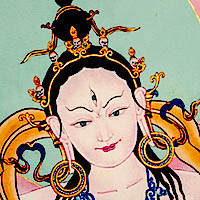
Machig Labdrön མ་གཅིག་ལབ་སྒྲོན།
1055 – 1149 CE
Nun, mother, wandering yogini, mind Stream emanation (tulku) of Yeshe Tsogyal that later became Jetsun Rinpoche; Machig Labdrön came from a Bön family and blended these shamanistic teachings with Buddhist Dzongchen to develop several Tibetan Vajrayana lineages as well as Mahamudra Chöd—a Prajñāpāramitā practice of “Cutting-Through-the-Ego” and experiencing emptiness. A child protege and scholar at a very early age, she left a comfortable and honored place in a monastery to wander and live with beggars and sleep wherever she found herself. Though criticized for having children, her teaching became so popular they spread from Tibet to India. In Tibet, it’s said she overcame the patriarchal bias of her times and gave teachings to as many as 500,000. Her lineage continues the Mahasiddha tradition of India and the Crazy Wisdom teachings of Tibet.
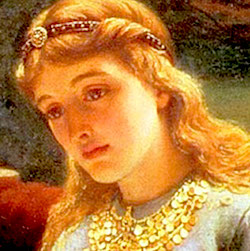
Heloise
1090 – 1164 CE
An orphan raised in a convent, Héloïse became a brilliant scholar, one of the earliest and most radical feminists, a powerful abbess over multiple convents, and half of one of the most famous and talked about relationships of her era. As femme fatale to Peter Abélard when he was on the rise toward becoming a pope, her influence caused him immense humiliation and pain as well as the inspiration for some of the most important books of the time, a regard for the sense over the words, and a declaration of philosophical independence for reason over belief. It’s become a tradition for the hoping-to-find-true love to leave letters at their crypt.

Hildegard of Bingen
1098 – 1179 CE
Circumventing her times’ strong prejudice and bans against women's social, artistic and theological participation, Hildegard became a famous writer, composer, botanist, philosopher, visionary, Christian mystic and the founder of scientific natural history in Germany. The first Westerner credited with describing the healing powers of food and corresponding with the political, religious, and scientific leaders of her day (popes, emperors, saints and scientists), she used her influence to combat corruption, promote spiritual insight, holistic healing, the arts, and women’s role in the world
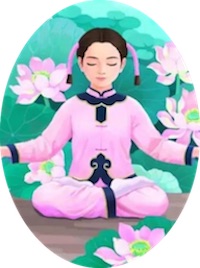
Sun Bu'er
1119 – 1182 CE
Sun Bu'er 孫不二 (1119 – 1182)
Taoist priestess, one of the Seven Masters of Quanzhen, mother of 3, beautiful, intelligent, wealthy, and known as “Clear and Calm Free Human;” Sun Bu'er founded the Purity and Tranquility School and wrote many famous poems and secret Taoist texts. She developed a “science of essence” concerned with psychologically going beyond the influence of both inherited personality and learned conditioning as well as a “science of life” developing ways to increase health and energy. Destroying her beauty to prevent male attack, she became the only woman included in the famous Taoist “Seven Perfected,” and through the ages a role model and inspiration for women following a spiritual path.
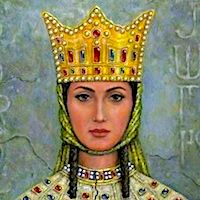
Tamar თამარ მეფე
1160 – 1213 CE
Tamar the Great
The first woman to rule Georgia and canonized by the Georgian Church; Tamar developed a powerful military, consolidated an empire, and supported the arts and many cultural advancements. Georgian history considers the time of her rule as the highest point of their Golden Age. She overcame intense resistance to a woman's rule that included exiling her first husband and defeating his coup attempts. Her dynastic heritage claimed descent from King David and her name has a Hebrew origin. Her two sons became the next two kings and she remains romanticized in legends still popular in contemporary Georgian culture.
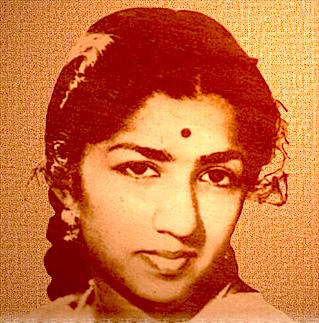
Razia Sultan Jalâlat-ud-Dîn Raziyâ (Raziya al-Din)
1205 – 1240 CE
Daughter of a Turkish slave who rose to become a sultan and the only woman to rule the Delhi Sultanate before or since; Razia devoted her rule to helping her people and established many libraries, research centers, and schools that went far beyond purely Islamic studies and included ancient philosophies, science, astronomy, and literature. Abandoning the veil, she was just, tolerant, and on religious matters emphasized the sense over the words, the spirit as more important than dogmatic belief. Her romantic love affair with Altunia is still famous and her inspiration continues in modern movies and TV shows.
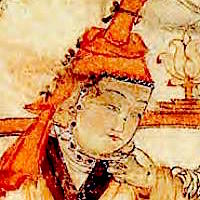
Orghina Khatun
1208 – 1261 CE
Orghina Khatun ( - 1261)
Daughter of the Oirat ruler, niece of Mongke Khan, and incorporated into Genghis Khan’s family lineage by marriage; Orghina Khatun became the first and only woman that ruled over the Chaghataid Khanate. Beautiful, wise, and pragmatic; her fortunes frequently rose and fell as she maintained her influence and power base by frequently switching sides, changing allegiances and religions as needed. She maintained supreme authority for over 15 years during a time when intense and violent struggles between leaders trying to take Genghis Khan’s place as Great Khan created one of history’s most chaotic political periods.
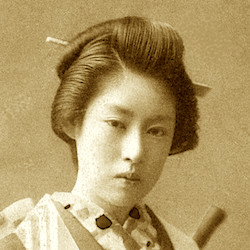
Kakusan Shido
1252 – 1305 CE
Kakusan Shido, Horiuchi (1252 - 1305)
During a time when men could easily divorce their wives but it was almost impossible for women and knowing personally how often women were used as pawns in male wars and revenge killings, Shido established Tokeiji 松岡山東慶寺 - a Rinzai Zen convent and the first used to shelter women.
Shido’s husband was the ruler known for repelling Kublai Khan’s Mongol invasion, spreading Zen Buddhism, and establishing the Samurai tradition. When he died, her dealing with the political intrigue led to this inspiration and the refuge called the “Divorce Temple.” It operated for over 600 years, sheltered runaway wives, gave them counseling and legal help. After helping two daughters of emperors, an emperor gave this extraterritorial rights. This empowered it to officially help divorcées and greatly increased its ability to help women in need.
During just the Tokugawa period, 2,000 women were sheltered and Zen luminaries like Reginald Horace Blyth, and D.T. Suzuki are buried there.
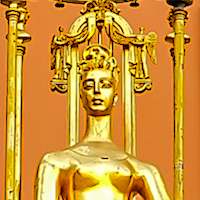
Khutulun (Turandot)
1260 – 1306 CE
Mongolian "Tiger Woman"
Daughter of Genghis Khan's cousin, Kaidu—the most powerful Central Asian ruler of the time—Khutulun became a famous warrior, wrestler, and political influence. Marco Polo described how she could ride into an enemy swarm and snatch a captive like a hawk grabbing a chicken. Beautiful, powerful, and charming; she challenged her many suitors with wrestling competitions and won thousands of horses before finally accepting one. She was chosen by her father to succeed him but the male relatives stopped the succession. She became known in the West as Turandot and memorialized by François Pétis de la Croix, Carlo Gozzi, Friedrich Schiller, Goethe, and—most famously—by Giacomo Puccini. Her renown continues today in many stories and movies, as a popular and extremely successful Australian race horse, and in the Netflix series, Marco Polo.
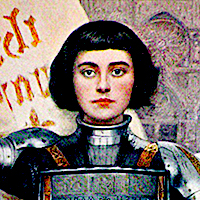
Joan of Arc Jeanne d'Arc
1412 – 1431 CE
Mystical, visionary warrior
Famous French heroine, Roman Catholic saint, warrior and mystical visionary; Joan of Arc was sent on a relief mission during the Hundred Years' War between France and England. Turning relief into victory, she quickly became a successful military leader and set up a final French victory. Captured by a group of dissident French nobles however, she refused to abandon her convictions and was burned at the state when still only 19 years old. This led to her beatification by the Church and Napoleon’s making her into a French national symbol. For subsequent generations, she became a powerful symbol of a brave and accomplished woman.
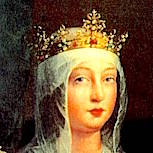
Isabella I (of Castile)
1445 – 1504 CE
Wise Renaissance queen, patron of the arts, strong centralizing leader, Christopher Columbus’ financier known for her fairness and justice, and the first woman depicted on both a US coin and US postal stamp; Isabella - after helping to reunify Spain, reorganized the government, dramatically brought down the debt and the crime rate to the lowest it had been in many years, and established Spain as the first global power dominating Europe for more than 100 years. Although she persecuted Jews and Muslims, her life was scrutinized by the Catholic Church for 500 years before being sainted in 1974 with the title, "Servant of God.”
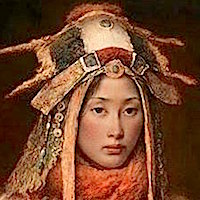
Mandukhai Khatun ндухай сэцэн хатан (Queen Mandukhai the Wise)
1449 – 1510 CE
Queen Mandukhai the Wise
Greatest Mongolian monarch in the 800 years after Genshis with enemies on every side, brilliant strategist, and wise leader; Mandukhai for the first time in over 100 years united the Mongolians under a strong central government. Recognizing Genghis Khan’s mistakes in establishing a Mongolian legacy, she set in place a stable government that lasted for generations up until World War II. After her heirless husband was poisoned by a Ming dynasty spy, Mandukhai adopted Batmonkh the recently orphaned and last living direct Genghis Khan descendent making here the leader of the civil war plagued Mongol Empire. She defeated the warring factions, married Batmonkh when he turned 19, and continued dramatic military victories over both new factions and Chinese incursion, fighting in battle even when pregnant and birthing babies. She became the reason for the largest and fastest Great Wall of China expansion. Columbus made his voyages in an attempt to find her; and, though not knowing her name, carried a letter to her from his Spanish monarch patrons. Her descendants include all of the Mongolian nobles and khans that followed after her. Inspired by and continuing her example, these descendants converted to Buddhism and in 1578 began the Dalia Lama lineage when they gave the Tibetan monk Sonam Gyatso this title, dalai (ocean—'Sea of Power') first used by Genghis Khan's son, Ogodei.
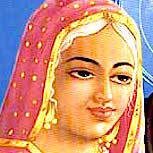
Nanaki (Bibi Nanaki ji)
1464 – 1518 CE
Elder sister, surrogate mother, and first disciple of the first Sikh guru, Nanak; Nanaki was instrumental in giving birth to the Sikh tradition. With a sister’s deep affection and a mother’s tender nurturing, she recognized Guru Nanak’s wisdom and potential when he was very young, encouraged his spiritual development, and became the first Sikh. She supported him when their father tried to force him into a conventional lifestyle as well as his rebellion against Hindu customs and rituals. She arranged his marriage, helped take care of his sons, and became a symbol and inspiration for the closeness of family and sister-brother relationship.
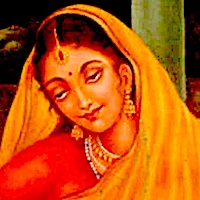
Meera (Mirabai, Meera Bai )
1498 – 1546 CE
Inspiring poet, cultural freedom inspiration
Royal family princess, mystical poet, Bhakti movement saint; Meera’s deep devotion expressed in public dancing and singing aroused strong opposition, rejection, and assassination attempts from the Royal Family. Dedicated to a formless divinity, she wrote countless devotional poems called bhajans that became and remain popular on temples across India. Her devotion and courage inspired folk tales, legends, poets, and now popular literature, comic strips, and movies. Her life became a symbol for the common people’s suffering and inspirations for creating a better world as well as for women struggling in an environment trying to force them into role-based boxes. Also one of 16 Sikh bhakti saints, she became a symbol of freedom and following a personal path of inspiration rather than bowing to social, family, and political pressures of conformity.

Teresa of Avila
1515 – 1582 CE
In a time caught up in the fury and violence of religious intolerance, inquisitions and sectarian war: Teresa symbolized a child-like devotion and surrendering to a forgiving and compassionate god. Saint, reformer, founder of 40 Carmelite monasteries, author and theologian; with deep insight she championed and helped establish a tradition for western mysticism and was the first in the West to harmonize a scientific view with contemplation and a mystical understanding. An inspiration for the Spanish Renaissance and Christian meditation practice, she promoted “mental prayer” and a personal approach to spirituality.
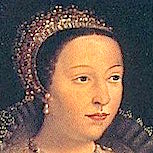
Catherine di Medici
1519 – 1589 CE
Queen of France, niece of Pope Leo X, mother of 3 kings and 2 queens (after resorting to using cow dung and drinking mule's urine), and one of the most influential people of her time; Catherine di Medici’s famous parents died from syphilis shortly after her birth and she was immediately caught up in political intrigues which at one point forced her into a convent for 3 of her happiest years. For 30 years she sponsored musicians, painters, sculptors, architects, Montaigne, and every branch of art. Continually working for peace in a time of many wars, she tried to reconcile Catholic-Protestant factions but underestimating the power of belief over reason, but this only generated wars that brought to the surface her great political and strategic skills but also earned her acclaim as a Machiavellian witch.

Gaspara Stampa
1523 – 1554 CE
Unrecognized during her life with only 4 of her more than 300 sonnets and poems published, Gaspara is now considered one of the best 16th century lyricists and greatest Italian woman poet of any time. From a merchant class and not nobility like the other poets of her time, she didn’t let her humble origin and lack of credentials stop her from writing some of the most memorable works of her era. Also a wonderful singer and lute player, she transformed the pain of unrequited love into inspired artistic creation that became a milestone in women's literature and a huge inspiration for Rainer Maria Rilke and many others.
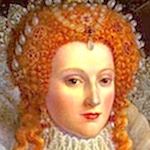
Elizabeth I (Gloriana, The Virgin Queen)
1533 – 1603 CE
Though far from a sage or saint, Elizabeth began her reign with England reviled and powerless but left it 45 years later rich and strong. Called by historians “The greatest ruler England has ever had,” she was patron to Shakespeare, Bacon, Marlowe, and Drake launching the scientific revolution and a golden age of progress and learning. Excommunicated by Pope Pius V, she believed that faith was personal, became “mother of the Church of England.” She opened up trade with the Islamic Ottoman Empire, and helped end the Vatican’s power over all Europe. Though stained by abuses in Ireland, she listened to popular sentiment and advice dedicating her life to her country and people becoming a symbol for good government and resistance to foreign threat.
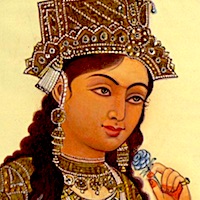
Mumtaz Mahal ممتاز محل
1593 – 1631 CE
Inspiration for building the Taj Mahal and wife of Genghis Khan descendent, emperor Shah Jahan; Mumtaz Mahal helped guide the nation while having 14 children in 19 years. She influenced her husband to forgive enemies, commute death sentences, and to help the poor. She also patronized artists, poets, theologians, and scholars often even providing pensions to their daughters. The Taj Mahal built as a tomb for her and described as one of the Wonders of the World and "the most beautiful building ever erected" was built facing south with the shape of a Mongul yurt.
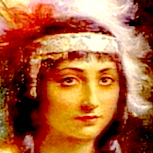
Pocahontas (Matoaka)
1596 – 1617 CE
Daughter of a powerful Native American Chief, savior of John Smith, supporter of the Jamestown colony, and the first Native American featured on a US stamp; Pocahontas was captured and held for ransom during an English-Indian war. Instead of returning to her tribe when she could, she stayed with the English, converted to Christianity and proceed to convert hearts and minds in both America and Europe. Her name literally means “little reckless” and she was called in Europe a "civilized savage" but history clarifies the European savagery, the Native American wisdom. Her descendants include two first ladies, Nancy Reagan and Woodrow Wilson's wife, Edith Wilson; actor Glenn Strange famous for his roles as Frankenstein’s monster and the Gunsmoke bartender; as well as astronomer Percival Lowell responsible for the discovery of Pluto and an important inspiration for H.G. Wells, Robert Heinlein, Ray Bradbury, and Edgar Rice Burroughs.
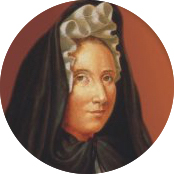
Madame Guyon Jeanne-Marie Bouvier de la Motte-Guyon
1648 – 1717 CE
Madame Guyon, Jeanne-Marie Bouvier de la Motte-Guyon (1648 - 1717)
French mystic, key advocate of Quietism, strong influence on the Quakers and other anti-materialistic Christian traditions; Madame Guyon was widowed at 28 having already borne 5 children. Advocating the ‘prayer of quiet’ and interior realization - teachings of Teresa of Avila and John of the Cross - she ran afoul of the Roman Catholic Church’s emphasis on believing in only external authority, was branded a heretic, and imprisoned in the Bastille for 7 years. Praying all the time and finding her God in every detail of life, she exemplified belief in basic goodness, the sacredness of all experience, and a genuine, European, Wu Wei tradition.
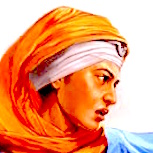
Mai Bhago Kaur
late 1600s - mid 1700s
Listed by the BBC as one of the 3 most badass women in history, the first Punjab woman to fight on a battlefield, and a Sikh saint; Mai Bhago was ingenious and heroic in battle when extremely outnumbered fighting against a large Mughal army. She inspired the male warriors with her bravery, and - dressed as a man - became Guru Gobind Singh’s body guard until he died in 1708. She tirelessly fought against the caste system, tyranny, and prejudice but after being injured in battle, she withdrew into a life of meditation and lived to a peaceful old age. Her spear is still honored in a Sikh museum.
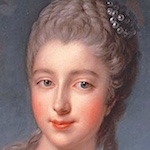
Madame de Pompadour (Jeanne Antoinette Poisson)
1721 – 1764 CE
Called by Will Durant “One of the most remarkable women in history” as “the most cultured woman of her time” and by Voltaire “one of us,” Madame de Pompadour as chief mistress of Louis XV became a brilliant governor of France, protector of Voltaire, savior of Diderot’s Encyclopedie, patron to Rousseau, Montesquieu, and the “Age of Enlightenment” in general. Excommunicated by the Catholic Church and the “Queen of Rococo,” she supported philosophy, literature, music and art as porcelains, hair styles, dresses, chairs, ribbons, beds, and dishes were named after her. Beautiful, charming, and intelligent, she led France to its highest artistic influence on European civilization as well as making her country much stronger economically and politically.
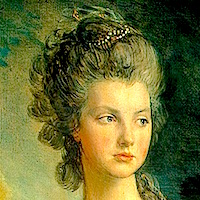
Catherine the Great Екатери́на Вели́кая (Catherine II)
1729 – 1796 CE
Russia’s longest-ruling female leader, “enlightened despot,” author, great patron of the arts, flamboyant and powerful; Catherine the Great helped create and ruled over Russia’s Golden Age revitalizing the institutions, modernizing it’s infrastructure, helping the serfs and emphasizing the arts. She shared more and more power with the nobles, tried to help the peasants, but the rapid expansion of the state relied on taking away much of their freedom and land causing their dissatisfaction and rebellions. She enthusiastically supported the The Enlightenment, helped Russia to become one of Europe’s great powers, greatly expanded colonizations that went as far as Alaska but was accused of many unjust wars. She established the first state-financed higher education institution for women in Europe and supported French philosophers like Voltaire and Diderot when his Encyclopédie was being oppressed in Europe. More licentious than most of her male counterpoints, history records 22 male lovers, many much younger, one only 22 when she was 61.
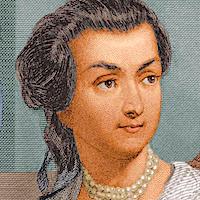
Abigail Adams
1744 – 1818 CE
One of the most exceptional women in American history
The first USA Second Lady and second First Lady, wife and advisor to president John Adams, mother of president John Quincy Adams, and one of the most exceptional women in American history; Abigail Adams became instrumental in the founding of the United States. A powerful influence for women’s rights, she emphasized the need for their education. A strong voice against slavery, she believed it was evil and a threat to democracy. Opposed to dogmatic, superstitious religious belief, she advocated for a heart-felt connection with a wisdom beyond words rather than a rote belief. Her accomplishments become more impressive when you consider the culture of her time when women’s roles were mainly domestic and educating women was considered foolish. Abigail never went to school but her self-education made her the most wise and influential in an extremely influential family.
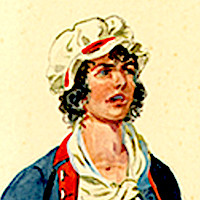
Margaret Cochran Corbin
1751 – 1800 CE
Early American hero
A gruff, smoking, antagonistic camp follower, nurse, and American hero; Margaret Corbin became the first U.S. woman to receive a military service pension. When only 5 years old, her father was killed when their home was raided by Native Americans and her mother taken never to return. This began a difficult life presenting numerous challenges that she enthusiastically and quickly met. In order to join her husband in battle, she dressed like a man and accompanied him to his posts. She took his place firing a cannon when he was killed and continued until she was too injured to continue and lost use of her left arm for life. Her fellow-soldiers called her “Captain Molly” and praised her cannon-firing skills. The highest-honored woman of the Revolutionary War, she was buried with full honors in the West Point cemetery and a monument was built for her.
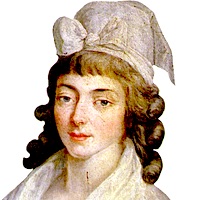
Madame Roland (Marie-Jeanne Phlippon)
1754 – 1793 CE
Revolutionary heroine
Sole survivor of her mother’s 8 pregnancies, Madame Roland became a revolutionary heroine and one of the mainspring influences of the French Revolution. A student of Plutarch, Voltaire, and Rousseau; her clear intelligence, wisdom and drive made her the equal to any of the contemporary politicians proving the capabilities of women in the political realm. Her drive, focus, and radiant intelligence made her the equal in accomplishments of any contemporary male politician. Sacrificing her life for her political beliefs, she died by guillotine during the French Reign of Terror with the famous words, “Oh Liberty, what crimes are committed in thy name!”. Her memoirs written in prison became a testament to the possibility of balancing freedom and equality as well as evolving potentials for a woman’s place politics.
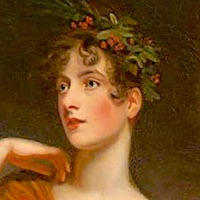
Mary Wollstonecraft
1759 – 1797 CE
Seminal feminist
Founding feminist philosopher, wife of anarchist forefather William Godwin, and mother of famous writer Mary Shelley; Wollstonecraft was one of the first in the West to advocate for women’t equality and rights. She wrote and spoke against the prevailing view that women are inferior to men and argued that women only appear inferior because of a lack of education and opportunity. Although stridently criticized by her contemporary writers and for 100 years by most believing ‘no self-respecting woman would read her work,’ she was a foundational influence on Jane Austen and scholars have traced her ideas in Pride and Prejudice, Sense and Sensibility, and as a character in Persuasion. Her influence expanded with rise of feminism in the 1960s and 1970s and continues today.
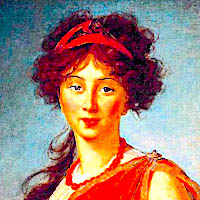
Madame de Staël (Anne Louise Germaine de Staël-Holstein)
1766 – 1817 CE
"The greatest woman of her time"
Powerful political advocate, “first woman of Europe,” fascinating conversationalist, "Napoleon's Nemesis," and preeminent authoress of the time; Madame de Staël inspired and encouraged the political opposition to the Reign of Terror and later to Napoleon and was banished for her efforts. A potent influence on European Romanticism and persuasive advocated of liberty, she sponsored and led salons, wrote novels, and important speeches. Praised by Tolstoy, her political influence advanced representative government, constitutionalism, and women’s rights. Her opposition to dictatorship brought her into intense conflict with Napoleon and she was considered—along with England and Russia—one of the 3 main forces against him. Struggling with opium addiction and suicidal depression, a close friendship with Juliette Récamier enabled her to continue and become—in Macaulay’s phrase—“the greatest woman of her time.”
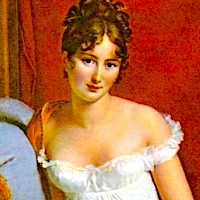
Juliette Récamier (Jeanne-Françoise Julie Adélaïde Récamier)
1777 – 1849 CE
Prototype of beauty, grace, charm, and loyal integrity
Icon of neoclassicism, prototype of beauty and grace who with “a sensuous pliancy stirred a hundred males without any known harm to her virginity,” lover of literature, patron of artists and intellectuals; Juliette led an interesting life that purportedly included marrying her father when she was 15, being exiled from Paris by Napoleon for her liberal views, losing a great fortune but remaining dignified and influential, and turning down a marriage proposal from a Prussian Prince who she deeply loved. Sex is a kind of currency that women have used throughout the ages to get what they want—food, affection, wealth, power, fame, security. Unlike money though that grows with time and interest, this particular kind of currency normally diminishes with age. Juliette however, became so adept at using this natural resource that it continued working for her in spite of old age and even blindness.
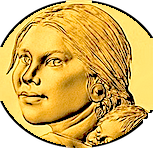
Sacagawea
1788 – 1812 CE
When 12, kidnapped and claimed by a rival tribe after a battle, when 13 won as 2nd wife by a gambling trapper, when 17 hired as guide and translator by the Lewis and Clarke expedition; Sacagawea traveled thousands of difficult miles sometimes surviving on only candles but saving and assuring the expedition’s success while opening communication with many isolated groups and spreading understanding. Immortalized in the names of rivers, mountains, parks, and trails; on a US 1$ coin, in literature, and in music from Phillip Glass to Stevie Wonder; she was considered a hero and taken as an example of strength, independence, and self-worth by the Women’s Suffrage Association.
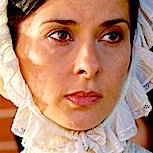
Sarah Grimke
1792 – 1873 CE
Going against her SC Supreme Court chief Justice father who held hundreds of slaves and opposed women’s rights, Sarah supported Abraham Lincoln and her writings fueled and inspired the beginning of the women’s suffrage movement. When she was 5 years old after watching a slave whipping, she tried to leave her state and find a place without slavery. Breaking the law, she taught a slave to read, taught slaves Bible lessons, and against the culture secretly advanced here own "unwomanly” education. One of the first women public speakers in America and under constant criticism and attack, she wrote the first serious essay advocating equality for women and became the first American woman working to end slavery.
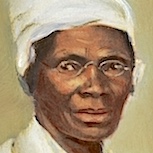
Sojourner Truth (Isabella (“Bell”) Baumfree)
1797 – 1883 CE
Born into slavery and now listed in the “100 Most Significant Americans of All Time,” Sojourner escaped with her infant daughter, went to court trying to get her son back and became the first black woman to win a case like this. She traveled extensively promoting the abolition of slavery, helped recruit black troops during the Civil War and tried to get land grants for freed slaves after the war. A powerful women's rights activist and friend of Susan B. Anthony, she gave one of the most famous speeches on women's rights and is considered a saint by both the Episcopal and Lutheran churches.
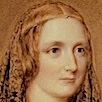
Mary Shelley
1797 – 1851 CE
Caught between her famous father’s Enlightenment political theories (William Godwin) , her famous husband’s allegiance to the ethos of Romanticism (Percy), and her famous mother (Mary Wollstonecraft) who is considered a founder of feminist philosophy; Shelley’s work promoted Taoist-like values emphasizing collaboration over competition, compassion over personal gain, the true civilizing role of the feminine principle. Her novel, Frankenstein foreshadowed our modern era and how easily we can become enslaved and manipulated by our inventions. A voice against superstition and dogma, her books became a beacon for the era of Romanticism, liberal politics, and gender equality.

George Sand (Amantine Lucile Aurore Dupin)
1804 – 1876 CE
Intriguing, inspiring, and subversive; France's most famous 19th C. woman writer; friend to Franz Liszt, Balzac, Henry James, Browning, Dostoevsky, and Turgenev; famous lover of composer Chopin, and famous actress Marie Dorval, George Sand was a cross-dressing, cigar and hookah smoking, rebellious and scandalous dramatist and campaigner for important political reforms. Not the most likely person for this list, her creative courage and compassionate kindness make it an easy choice. As she wrote, “Know how to give without hesitation, how to lose without regret, how to acquire without meanness.”
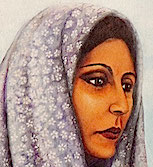
Táhirih طاهره (Fatimah Baraghani, "The Pure One")
1814 – 1852 CE
A genius-deep and curious mind living in a culture and with a husband who didn’t think women should read, be seen, or think for themselves; beautiful, educated, and from one of the most prominent families of her time, Tahirih is said to be the first woman to unveil and question Islamic political and religious orthodoxy which led to her imprisonment and execution. She rose above immense obstacles and became a famous poet, philosopher, and religious leader inspiring and organizing women to reject their oppression. “The first woman suffrage martyr,” her poems are still popular and her influence on Bábí, Bahá’í, and women’s rights are immense and continuing to this day.
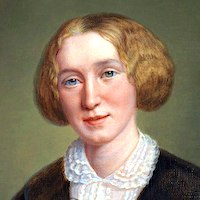
George Eliot (Mary Anne Evans)
1819 – 1880 CE
Pioneering literary outsider
Poet, journalist, translator, novelist, agnostic humanist, political agitator, and courageous follower of her own path; George Eliot wrote what some consider the best novel ever written in the English language (Middlemarch). Known for their psychological insight, her novels reflected her personal experience on the edges of the social, religious, and political fringe. Using a male pen name to escape the strong, feminine stereotypes of her era, this strategy also helped shield her from personal life scandals arising from norm-breaking situations like her adulterous relationship with philosopher George Henry Lewes and her marriage to John Cross who was 21 years younger. Her father didn't consider her beautiful enough to ever find a husband but clearly saw her high intelligence and financed a classical education for her far beyond what was normally available for women. Her father's wealth and high social status also gave her a clear perception of the extreme contrasts between the rich landowners and impoverished people living on those estates. This became a frequent theme in her books.
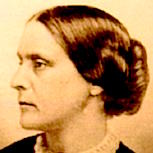
Susan B. Anthony
1820 – 1906 CE
Harshly ridiculed, accused of trying to destroy marriage and the family, arrested for voting; Susan B. Anthony started working to end slavery as a teenager and later ran the largest petition drive against it. Giving up to 100 speeches a year, she organized and campaigned for equal rights leading to the Nineteenth Amendment (popularly called the “Susan B. Anthony Amendment”) giving women the right to vote in 1920. The first woman to be on a U.S. coin, she gave "the most famous speech for woman suffrage,” and her efforts led to legal rights for married women, women being able to attend colleges, and a fundamental, cultural attitude change.

Florence Nightingale
1820 – 1910 CE
The founder of modern nursing, she started the first secular nursing school in the world, emphasized preventive medicine and holistic health, improved healthcare for all classes as well as hunger relief in India. She helped abolish harsh prostitution laws and expanded acceptable roles for women. A strong Christian, she was critical of organized religion, appreciated pagan and eastern religions, and strongly opposed discrimination of all kinds. She inspired worldwide health care reform and her work improved the situation for women everywhere. Her influence remains strong and the Florence Nightingale Declaration has been signed by over 18,500 nurses from 86 countries.

Harriet Tubman (Araminta Ross)
1822 – 1913 CE
Beaten, whipped, and escaped slave; US armed army spy, nurse and scout during the Civil War; and soon to replace on the $20 bill slave-owning Andrew Jackson who illegally broke treaties with native Americans and refused to support Supreme Court rulings in their favor; Tubman was the first woman to lead an armed war campaign (that freed 700+ slaves), used the Underground Railroad to secretly rescue over 70 slave families, found work for the newly freed slaves, and became an important part of the women's suffrage movement. A devout Christian considered by many a saint, although living in constant poverty, she never stopped her humanitarian work and is now a shining symbol for courage and freedom.
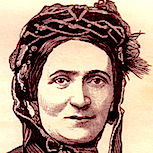
Ellen Craft
1826 – 1891 CE
A slave secretly married to a slave with a different master and fearing their forced separation, Ellen (at least ¾ European) cut her hair short and disguised herself as a white man traveling with his servant who was really her husband. The elaborate disguise included facial bandages and a sling so she wouldn’t have to sign papers since she couldn’t read or write. She had to act a different gender, race, and social class. After many days traveling by train and steamer they arrived safely in the north and then - fearing slave hunters - went on to England where they wrote a popular account that became an important influence for abolition. After the war, they returned to Georgia and started an agricultural school.
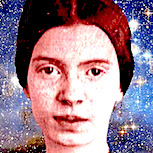
Emily Dickinson
1830 – 1886 CE
Though now considered one of the greatest figures in American literature and one of the most important poets, only a few of Dickson’s poems were published during her lifetime and those were significantly edited and changed by publishers. Her first collection wasn’t printed until years after her death and a complete collection wasn’t published until 1955. A serious student of botany, she made and maintained a vast collection of plants; highly introverted, creative, unique, and challenging the assumptions of her time; she seldom left her house but wrote 40 volumes of almost 1800 poems.
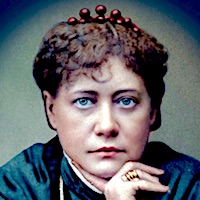
Blavatsky, Helena Еле́на Петро́вна Блава́тская
1831 – 1891 CE
Co-founder of Theosophy
Mystic, medium, philosopher, co-founder of Theosophy; Blavatsky traveled widely and claimed to meet many “Masters of the Ancient Wisdom.” She studied and practiced in Tibetan monasteries, became one of the first Westerners to ever become a Buddhist, worked closely with Hindu reform movements, and criticized the spiritual materialism of the spiritualist traditions she became linked with. She worked hard to bridge religion to and with philosophy and science but the scientific community characterized her as “one of the most accomplished, ingenious, and interesting imposters in history.” She wrote about ancient giants she believed made Stonehenge, the history of Atlantis, and many tenants of esoteric spiritualism. Her efforts became a major influence on the spread of Hinduism and Buddhism in the West as well as on Rudolf Steiner’s Anthroposophy and the New Age Movement.

Helen Pitts Douglass
1838 – 1903 CE
Descendant of Mayflower Pilgrims, Helen Pitts Douglass was a dedicated abolitionist active in the women’s rights movement. Putting her philosophy into practice, she went against her parents, friends. neighbors and subjecting herself to both white and black scorn, married an African American, Frederick Douglass. After he died, she spent years traveling and lecturing for social justice and established the Frederick Douglass memorial now administered by the National Park Service.
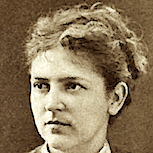
Fanny Osbourne Stevenson
1840 – 1914 CE
The inspiration and strength behind Robert Louis Stevenson, we can thank Fanny for such literary treasures as Kidnapped, Strange Case of Dr. Jekyll and Mr. Hyde, The Black Arrow, and Treasure Island. Following her first husband to the silver mines of Nevada traveling by wagon and stage-coach, she lived in a rugged mining camp shooting a pistol and rolling her own cigarettes. After leaving her gold and prostitute-chasing husband, she met a struggling Robert Louis Stevenson in Paris, saw his writing genius and began a fierce love affair that inspired, encouraged, and supported him. This provided a strong platform on which he built some of the world’s most endearing characters and stories. In her later life she was described as "the only woman in the world worth dying for."
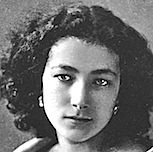
Sarah Bernhardt
1844 – 1923 CE
“One of the finest actors of all time”
“The most famous actress the world has ever known", “one of the finest actors of all time,” “first international entertainment icon,” and “notorious liar;” Sarah Bernhard acted and sang for over 60 years starring in many of the earliest films ever made. Admired by everyone from Sigmund Freud to Mark Twain to Czar Alexander III, her mother was a prostitute and Sarah forged a birth certificate to claim French citizenship. Expelled from her first acting school for slapping a fellow actress, Sarah became mistress to a Belgian prince, to a famous courtesan, and slept in a coffin to better understand tragedy. During a war she converted her theatre into a hospital and took care of wounded soldiers.

Anna Grigoryevna Dostoyevskaya ригорьевна Достоевская
1846 – 1918 CE
The woman behind the man and clear example of “better half,” Dostoyevskaya started helping Dostoyevsky as a 19-year old secretary when he was 44 and soon became not only his devoted and energetic wife; but also, his very capable business partner who helped him through extreme poverty, illness, and gambling addiction that at one point lost not all their money but her clothing as well. Not remembered very well by history but essential to Dostoyevsky’s success, she took charge of all their financial issues, publishing and business affairs, made him Russia’s first self-publish author liberating him from a lifetime of poverty and debt. To disprove one of his disparaging remarks about women, she became one of the first female Russian philatelists and worked on her collection for over 50 years while she wrote two biographies; saved his manuscripts, letters, and photographs; and set up a display of them in a State Historical Museum.
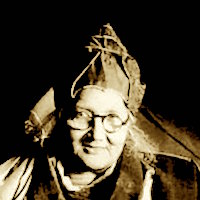
Jetsun Rinpoche, Shugsep ལོ་ཆེན་ཆོས་ཉིད་བཟང་མོ།
1852 – 1953 CE
Considered one of the most influential women in Tibetan history, personification of the great Tibetan women teachers, meditation master with more than 500 disciples; Jetsun Rinpoche when only six years old, began teaching with such insight and understanding that people were moved to tears. Radiating compassion and riding a large goat, she traveled through Tibet teaching, saving animals from slaughter with the money people gave her, and welcomed monks, nuns, laymen, women, and children. Beginning with her father who was extremely disappointed she wasn’t born a boy and later abandoned the family and continuing through her main teacher, Pema Gyatso; Jetsun Rinpoche successfully dealt with the patriarchy and sexism of her time and place.
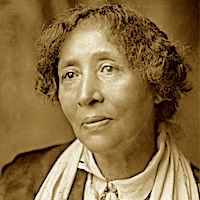
Lucy Parsons (Eldine Gonzalez)
1853 – 1942 CE
Political activist “more dangerous than a thousand rioters”
Born a slave to Native-American/African-American/Mexican-American parents; Lucy became a powerful orator, American radical activist, founder of the Industrial Workers of the World, and labor union organizer. She married a newspaper editor and former Confederate soldier—Albert Parsons—but had to quickly leave Texas because of interracial prejudice. In Chicago they became involved in the labor movement and helped organize a peaceful rally striking for an eight-hour day. An unknown person threw dynamite at police but several organizers including Albert were blamed and executed. This became a galvanizing event on the entire world’s labor movements as well as inspiring Lucy and an active life into her 80’s described by police as, “more dangerous than a thousand rioters.”
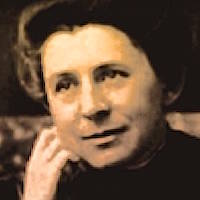
Ida Tarbell
1857 – 1944 CE
Journalist, author, teacher, and leading authority on Abraham Lincoln; Ida Tarbell invented a new kind of reporting now called investigative journalism. She developed new techniques like researching public documents scattered across the country and then, based on this research, interviewing executives, academics experts, and government regulators. With a little help from Mark Twain, she applied these new methods to an exposé on the Standard Oil Company and John D. Rockefeller who she described as viciously money-grabbing, miserly, and harming the country with his monopolizing of oil. This ushered in what’s now called the “the era of muckraking journalism,” brought down one of the world's worst tycoons, broke up the Standard Oil monopoly, and inspired a play with 686 continuous performances setting the record for any New York play.
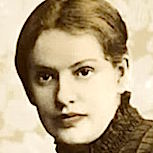
Lou Andreas-Salomé
1861 – 1937 CE
Daughter of a Russian general, icon for 20th century equality-gaining women, erotic pioneer, psychoanalyst student of Sigmund Freud, author of more than 12 books including the first published works on Friedrich Nietzsche, major influence on 19th century intellectual circles, lover and confidant of Rainer Maria Rilke, close friend and/or lover of Nietzsche who she refused to marry, philosopher Paul Rée, Leo Tolstoy, and Boris Pasternak. One of the first female psychoanalysts, in spite of being persecuted by the Nazis and her library destroyed by the Gestapo, she lived a life of intense creativity, freedom, and independence far beyond the status quo of her time.

Madame Curie (Maria Salomea Skłodowska)
1867 – 1934 CE
The first woman to win a Nobel Prize, to win one twice, and the only person ever to win the Nobel Prize in multiple sciences; Madame Curie’s work was “epoch-making” - a huge influence shaping modern times. Though revolutionizing physics and chemistry, she maintained her honesty and moderate life style often refusing honors, insisting monetary awards be given to institutions rather than to herself, and (like Ben Franklin) refusing to patent many of her inventions so that they would be more widely available. Albert Einstein said she was most likely one of the only people in the world who could not be corrupted by fame.
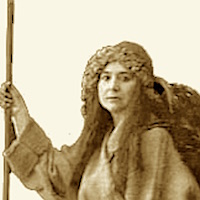
Alexandra David-Néel
1868 – 1969 CE
Author of over 30 books on Eastern religion, explorer, opera singer, and anarchist; Alexandra David-Néel became an important influence on the beat writers like Jack Kerouac and Allen Ginsberg as well as Eastern philosophy popularizers like Alan Watts. Only daughter of an exiled French political activist, she became serious about esoteric spiritual practices at an early age and by 15 was practicing austerities, fasting, and following the practices of ascetic saints. When 21, she became a Buddhist. A fearless explorer, she disguised herself as a beggar/monk, smeared her face with soot, and visited the highly forbidden city of Lhasa in 1924. Like Marco Polo, upon her return she became famous but unbelieved.
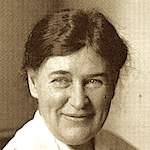
Willa Cather
1873 – 1948 CE
Modern day Lao Tzu
Wonderful novelist with a flare for evoking a deep appreciation for nature and the natural world, Willa Cather championed the values of self-sufficiency, independence, and harmony with nature. Nostalgic for the time when most people lived on farms, she used “the rising and setting of the sun” as a major theme and honored the struggle of exiled immigrants. Infusing meaningfulness and sacred outlook into simple, daily tasks she unknowingly continued the Zen spirit and understanding Lao Tzu wrote about so much longer before.
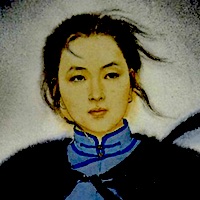
Qiu Jin 秋瑾
1875
"China’s Joan of Arc"
Feminist revolutionary, poet, Chinese national heroine, "Woman Knight of Mirror Lake"; Qiu Jin became a famous and inspiring historical martyr. Involved in a secret society working to overthrow the corrupt Qing Dynasty, she studied martial arts, wore Western male clothes, joined Sun Yat-sen's revolutionary group, and while in Japan edited a popular journal. She wrote and eloquently advocating women's right to education, to choose their own husbands, and the abolishment of foot binding. Her challenge to China’s entrenched patriarchy led to her—when only 31 years old—arrest, torture, and beheading.
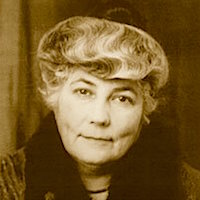
Helena Roerich Елéна Ивáновна Рéрих
1879 – 1955 CE
Theosophist, translator, archeologist, adventurous traveler to unknown inner and outer realms, founder of the Institute of Himalayan Studies, co-creator of the "Agni Yoga" practice of “Living Ethics”; Helena Roerich with her husband Nicholas fearlessly explored remote regions of Mongolia, Tibet, India, China, and the Altai regions of Russia. During these travels, they discovered rare manuscripts, enclaves of wisdom, and many insights into the cultural unity of diverse people. This led to her writing 20 books including the 1926 "Foundations of Buddhism" that helped spark an early Western interest in Buddhism. She co-authored an international treaty signed by heads of 22 countries that helped protect historical monuments, scientific and artistic institutions. A frequent correspondent with president FDR and VP Henry A. Wallace, she was at first a positive influence but then a political liability that led to Wallace’s defeat by Harry Truman.
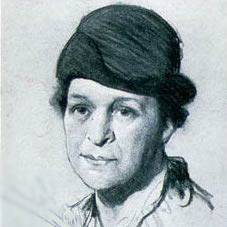
Frances Perkins
1880 – 1965 CE
One of the most influential champions for worker's rights
First woman cabinet member, close friend of FDR, and fierce advocate for worker's rights; Perkins helped create unemployment insurance, social security, the minimum wage, the Civilian Conservation Corps, and laws to regulate child labor. The longest serving Secretary of Labor (1933-1945), she became essential in establishing and enacting the New Deal as well as the Immigration and Naturalization Service. During the challenging times during World War II, she mediated strikes, balance labor vs. war needs, and helped the transition of women moving into traditionally male-only jobs. Her skill and influence were profound but without much charisma she mainly stayed in the background without much public attention. Her honors include the National Women's Hall of Fame, the Labor Hall of Fame, the 31 Icons of a LGBT History Month, and the 2019 Government Hall of Fame. Senator Elizabeth Warren uses a podium built from wood recycled from her homestead.
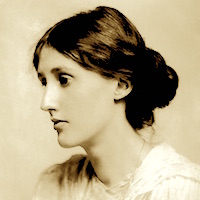
Virginia Woolf
1882 – 1941 CE
Stream of consciousness writing pioneer, one of the most influential 20th century writers, “the major lyrical novelist in the English language,” and “feminist inspiration;” Woolf struggled with mental illness all her life and yet wrote some of the era’s best short stories and novels, some translated into 50 languages. A deep influence on world culture, she promoted universal education, intellectual freedom, class equality, and feminism. Still popular today, the National Portrait Gallery in London sells more of her postcards than of any other. With a deep understanding of inner, psychological struggle, her characters expose the sacred within the ordinary, the profound in the midst of the commonplace.
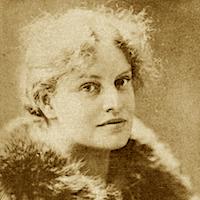
Marie Bonaparte
1882
Princess, psychoanalyst, sex scientist
Princess of Greece and Denmark, author, psychoanalyst, granddaughter of Napoleon’s younger brother and the main Monte Carlo real-estate developer; Marie Bonaparte used her wealth to help Freud escape from Nazi Germany as well as significantly increase the popularity of psychoanalysis. Because of multiple phobias and hypochondria when she was young, she spent much of her time alone reading, studying, and working with the scientific method. This research continued after her marriage and multiple affairs failed to give her orgasms and she did many studies that finally brought her to Freud and his famous comment to her, "The great question that has never been answered and which I have not yet been able to answer, despite my thirty years of research into the feminine soul, is 'What does a woman want?’”. A practicing psychoanalyst, she founded the French Institute of Psychoanalysis, translated Freud’s books into French, wrote several of her own on psychiatry as well as a biography and commentary on Edgar Allan Poe.
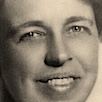
Eleanor Roosevelt
1884 – 1962 CE
Longest-serving First Lady in the history of the United States, Eleanor was mentor and guiding influence behind her powerful and famous husband, blending his charisma with her wisdom. Though a terrified introvert, she was the first First Lady to be on talk radio, address a national convention, hold a press conference, write a newspaper column and averaged 150 lectures a year throughout the 50’s. She championed civil rights, women’s rights, helped write the Universal Declaration of Human Rights and became chairperson of the UN Commission on Human Rights. Called the “First Lady of the World” by Harry Truman, she received thirty-five honorary degrees and two of her speeches are on the Top 100 Speeches of the 20th Century.
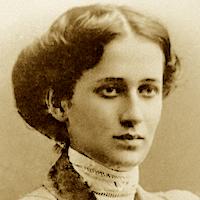
Anna Akhmatova Анна Ахматова (Andreyevna Gorenko)
1889 – 1966 CE
Russia's most loved female poet
One of the most famous Russian poets, strikingly original and courageous critic, powerful and legendary Russian heroine; Anna Akhmatova's chose to remain in her country rather emigrate when her work was condemned by Stalinist censors, her first husband was killed by Soviet secret police, and her son and common-law husband were thrown into the Gulag. During this time her poetry was circulated on scraps of paper that were read once and then immediately burned.

Jeanne de Salzmann (Madame de Salzmann)
1889 – 1990 CE
Follower, preserver, and promoter of Gurdjieff's teachings
Eurhythmics dance teacher, daughter of a famous architect, and married to "former dervish, former Benedictine, former professor of jui-jisu, healer, stage-designer, inventor, and the greatest of living painters," Alexander de Salzmann; Madame de Salzmann met Gurdjieff in 1919, studied with him closely, and continued promoting and organizing his teachings for the next 71 years. She founded, help fund, organized or taught in Gurdjieff Institutes and Foundations in Paris, New York City, London, Caracas, and many smaller groups in many parts of the world.

Pearl Buck
1892 – 1973 CE
Growing up and living in China as the daughter and wife of Christian missionaries, Pearl Buck described their arrogance and manipulation arguing against the benefit of missionaries and an institutional church. Denounced in China during the cultural revolution and prevented from visiting with Richard Nixon, she wrote 60+ books, won a Pulitzer, and became the first American woman to win the Nobel Prize for Literature. Long before they became popular or safe positions, she publicly challenged gender and racial discrimination while founding the first interracial and international adoption agency that placed over 5000 “unadoptable” children.
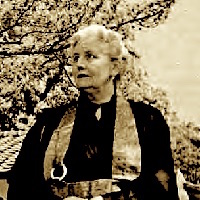
Ruth Fuller Sasaki
1892 – 1967 CE
First foreigner to become a priest in a Japanese Rinzai Zen temple, only woman yet to be a Daitoku-ji temple priest, and pioneering welcomer of Buddhism into the USA; Sasaki was an early student of yoga and Eastern philosophy during the 1920’s. She translated herself and—supervising a team including Gary Snyder—initiated many of the first translations of important Zen texts into English. Student of D. T. Suzuki, mother-in-law to Alan Watts, married to Zen master Sokei-an; she created places for people to practice, provided texts, and helped open the door for most of the early American Zen practitioners.
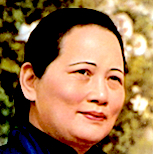
Soong Ching-ling (Madame Sun Yat-sen)
1893 – 1981 CE
The "mother of modern China,” wife of Sun Yat-sen, a Vice President of China and Honorary President of the People's Republic of China; Soong Ching-ling makes up an important part of one of history’s most famous and influential sets of sisters. Daughters of an American-educated Methodist minister/banker, one sister - a power in herself - married the leader of the Kuomintang, Chiang Kai-shek; another married the Chinese finance minister and because the richest woman in China. Soong Ching-ling stayed in mainland China and held important government positions but was persecuted during the Cultural Revolution.
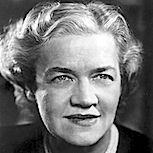
Margaret Chase Smith
1897 – 1995 CE
Called by Khrushchev "the devil in disguise of a woman,” Chase was the first woman to serve in both houses of the US Congress, as chair of the Senate Republican Conference, and the first to be placed in nomination for the presidency. Though an independent Republican, she deeply respected John Kennedy, voted against Nixon proposals, and led the opposition against demagogue Joe McCarthy. She strongly supported civil rights, Medicare, increased educational funding, and the NASA administrator said without here they wouldn’t have been able to land a man on the Moon.
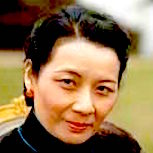
Soong Mei-ling 宋美龄 (Madame Chiang Kai-shek)
1897 – 2003 CE
Called by Life Magazine the "most powerful woman in the world,” by Ernest Hemingway the “empress” of China, and compared by Clare Boothe Luce to Florence Nightingale and Joan of Arc; Soong Mei-ling lived during 3 different centuries, was the Republic of China’s first First Lady, Sun Yat-sen’s sister-in-law, wife and political partner to Chiang Kai-shek. She worked hard fighting against the Japanese invasion of China, toured the USA trying to get support, and started extensive welfare projects and schools for orphans, and worked on many attempts to heal China’s political divisions.
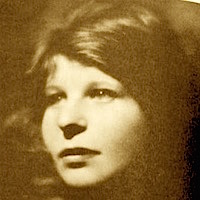
Ariel Durant (Chaya Kaufman)
1898 – 1981 CE
Brilliant conversationalist, champion of women’s rights, student, lover, wife, muse, and equal to Will Durant; Ariel emigrated with her mother to America from the Ukraine when 3 and grew up on the New York streets learning to fight and take care of herself. Will married her when she was 15 and he was 28 and her teacher. They spent the next 68 years together on an intellectual, contemplative, and literary journey writing The Story of Civilization and many other books and articles. Named "Woman of the Year,” she shared a Pulitzer Prize and the Presidential Medal of Freedom with her husband. Constantly introducing him to radical artists, poets, and free-spirits from Greenwich Village to Woodstock, she balanced Will’s pedantic, scholastic personality with love-of-life adventurism. Although running away several times during the early days of their marriage, they came to represent the depths of close relationship, the joining of the two halves of the complete being described by Plato, and the possibilities for marriage.
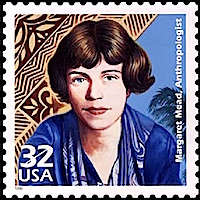
Margaret Mead
1901 – 1978 CE
Cultural anthropologist, creator and exemplar of the Jewish mother stereotype, feminist movement cornerstone, husband of Gregory Bateson, mother of Mary Catherine Bateson; Margaret challenged prevailing views about race and intelligence, about traditional sexual mores, about the false identifications that seemingly separate human unity by fixating on visible but insignificant cultural displays. Her work significantly advanced the evolution of a one-world vision and the importance of us all becoming “citizens of the world.” President Jimmy Carter awarded her the Presidential Medal of Freedom in 1979.

Heleni Kazantzakis
1903 – 2004 CE
Orphaned at 15, Heleni Samiou met—and fell in love with—Nikos Kazantzakis when she was 21 and he was 41. They lived together for 20 years before marrying in 1945. Although writing several books herself and even winning literary awards, she mainly dedicated herself to supporting her husband's writing career by transcribing his manuscripts. For example, using only a small typewriter, she typed and re-typed his 33,330 verse epic poem, The Odyssey, seven times. Many of her suggestions and ideas became integral parts of his work. After Nikos died, Heleni moved to Geneva where she created a welcoming environment for literary circles, Kazantzakis fans, and Greek freedom fighters. She was persecuted by the Greek military dictatorship, captured as a prisoner of war by Turkish soldiers, and escaped with the aid of British helicopters. She donated the profits from Nikos' books as relief aid to the families of political prisoners after the Turkish invasion of Cyprus in 1974.
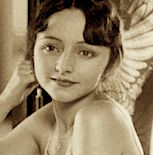
Anais Nin
1903 – 1977 CE
A writer since 11 years old and after sharing a bohemian lifestyle with Henry Miller in Paris while she was married to her first husband; she married her second husband while still married to the first. A radical feminist long before it became popular, her renown grew quickly during the 1960’s feminist movement. With a “degree in erotic lore,” she was the first well-known woman in the West to write erotica and is widely considered the best at it although she began writing it as a joke without intention to print. Close friend and in some cases lover to many of the main literary figures of her day including Henry Miller, John Steinbeck, and, Gore Vidal; Nin bravely looked deeper than the thin shell of politically correct, respectability, and status quo.
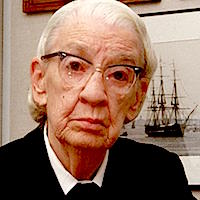
Grace Hopper (Grace Brewster Murray Hopper )
1906 – 1992 CE
Computer programming pioneer "Grandma COBOL,” US Navy admiral nicknamed "Amazing Grace,” IT goodwill ambassador, and recipient of 40 honorary university degrees; Hopper balanced a disciplined and conventional external with a fiercely independent, irreverent, and creative inner force. Her work and belief that computer code could be written in English led to the development of the early programming language, COBOL that’s still in use today. One of the oldest active duty officers in the US Navy’s history, she served for over 42 years and received the National Medal of Technology, the Presidential Medal of Freedom, and numerous awards and honors. While her team was working on an early computer in 1947, they discovered a problem caused by a moth in a relay. This was the physical source of the symbolic term, "debugging."
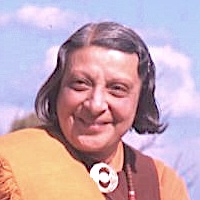
Li Gotami Govinda (Ratti Petit)
1906 – 1988 CE
Pioneering, fearless, artistic woman of wisdom
Photographer, painter, writer, composer, fearless traveler, and wise woman; Li Gotami was born into a wealthy Zoroastrian family in India, studied painting in Europe, became a close student of Abanindranath Tagore, and married Anagarika Govinda. A passionate traveler, she quickly broke out from the narrow boundaries expected of traditional Indian women. For many years, the couple lived near Kasar Devi a bohemian Mecca for their many friends—spiritual seekers like Walter Evans-Wentz, John Blofeld, Allen Ginsberg, Gary Snyder, Timothy Leary, Ralph Metzner, R. D. Laing, and Robert Thurman. Their many expeditions to Tibet included a perilous one to Tsaparang, the ancient capital Guge considered by some historians as the origin location of the Shambhala legends. Here she took photographs, did sketches, and made fresco tracings which preserve a record of how Tibet once was before the devastation of the Chinese invasion and extensive desecrations during the Cultural Revolution. In later life and in ill health, the couple moved to California where they were supported by Alan Watts and Suzuki Roshi's San Francisco Zen Center.

Hannah Arendt
1906 – 1975 CE
Fearless researcher into the darker reaches of the human psyche
An influential philosopher, historian, and deep thinker; Arendt developed some of the most important political theories of the 20th century. An early, 1932 critic of the Nazi Party; she was arrested the year Hitler came into power, imprisoned, escaped, and her German citizenship was taken away in 1937. Arrested again in France, she escaped again and eventually came to the USA in 1941
Influenced by and a major influence on Martin Heidegger, she studied under him and had a four-year affair when she was 17 and he 35. She also studied with Karl Jaspers who became her doctorate degree supervisor.
Her research and thinking focused on the formation of nationalistic, fascist, and totalitarian systems and how ordinary people become controlled into following them. She applied these theories in covering the trial of Adolf Eichmann for the New Yorker in 1961 which created one of the biggest controversies of the era.
Instead of accepting the common depiction of Eichmann as an evil monster, she described him as a victim of an unwillingness to think clearly and instead mindlessly take orders. This refuted the dualistic understandings and accepted ideas of the time about unquestioning obedience to superiors. These were some of the most relevant issues in preventing more totalitarian take-overs but brought about intense criticism of her from many sides.
Perhaps Jung's ideas about projection were at play here: people not seeing or admitting the pulls toward this kind of evil in themselves and projecting it out completely on Eichmann whom she described as only "banal," ordinary, fixated on the duty of obedience, and abandoning critical thinking — qualities possibly shared too closely by the critics.
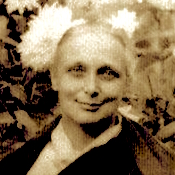
Freda Bedi, Sister Palmo
1911 – 1977 CE
Freda Bedi, Sister Palmo (1911 – 1977)
First Western woman to become a Tibetan Buddhist nun and married to a Sikh from Guru Nanak’s clan; Freda Bedi spoke before hundreds of thousands of people helping Gandhi and his national independence movement, was arrested and and spent months in prison held along with her children. People came to her by the thousands just for her blessing and she later worked for the United Nations Social Services, the Ministry of External Affairs, and the Tibetan Refugees Commission. Nehru asked her to be in charge of the Social Welfare Board in 1959 when the Dalai Lama and thousands of Tibetans arrived in India and she began studying with the 16th Karmapa. She helped establish the Young Lamas Home School and asked Chogyam Trungpa to train and become spiritual advisor to young monks there.
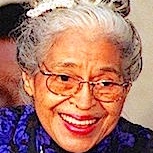
Rosa Parks
1913 – 2005 CE
Symbol of the Civil Rights Movement, an international icon of resistance to racial segregation. and called by the US Congress “the mother of the freedom movement;” Rosa Parks sparked the the Montgomery Bus Boycott and as a result was fired from her job and received death threats for years. She dedicated her life to advancing social issues, donated most of the money from her almost constant speaking engagements, and although given the Presidential Medal of Freedom, the Congressional Gold Medal, numerous awards; she lived a very simple, poor and private life and was even evicted from her apartment in 2002. The subject of many books, films, and songs; her legacy continues to inspire efforts toward equality everywhere.
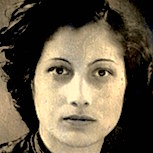
Noor Inayat Khan
1914 – 1944 CE
Daughter of the famous musician and teacher, Hazrat Inayat Khan who brought Sufism to the West; Noor was a skilled musician, studied medicine, and wrote children’s books. She became a hero to allied forces fighting against Nazi Germany in WWII and was given the George Cross, one of Britain's highest awards for bravery as well as a French Croix de Guerre. She followed her father’s teachings on non-violence but because of Hitler’s threat to Europe joined the British Air Force and then a secret British espionage group. She was the first woman spy to infiltrate occupied France and was later betrayed, captured, refused to cooperate or give information and was executed in a concentration camp.
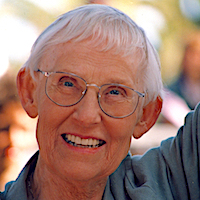
Charlotte Joko Beck
1917 – 2011 CE
Authentic, pioneering Western Zen master
Piano teacher, secretary, mother of four, and one of the first Western Zen teachers; Charlotte Joko Beck didn't begin Buddhist practice until her 40's but it quickly became her life. Her first teacher was Taizan Maezumi Roshi but she left him amid scandals involved with him sleeping with students. She also studied with Hakuun Yasutani and Soen Nakagawa. She emphasized the synergy between Buddhism and psychology as well as the practical, emotional reality of our lives. She stopped shaving her head and wearing robes, and helped American Zen evolve beyond the walls of Japanese culture.
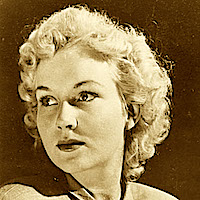
Carolyn Cassady
1923 – 2013 CE
Formal artist at 9 years old selling her first painting at 14, award winning set designer and head of make-up at 16, author, “grande dame of the Beat Generation,” founding member of the Academy of Parapsychology and Medicine, mother of 3 Neal Cassady children, and Jack Keroac love partner; Carolyn Cassady later regretted but divorced Neal launching him into further travels with Ken Kesey's band of Merry Pranksters (described in Electric Koolaid Acid Test) and his death in Mexico. Student of Erich Fromm, Dane Rudhyar, Edgar Cayce, and Peter Drucker; symbol in On the Road for integrity and goodness; muse for and character in the writings of Kerouac, Tom Wolfe, John Clellon Holmes, and Ken Kesey; portrayed by Kirsten Dunst and Sissy Spacek in movies; she took care of their children by herself when Neal spent 2 years in jail for a tiny amount of marijuana and worked to prevent young people from following in the self-destructive, Beat-imitating misunderstandings.

Toni Packer
1927 – 2013 CE
A Zen teacher minus the 'Zen' and minus the 'teacher.’
Toni Packer (1927 – 2013)
Dropped-out successor to famous Zen teacher Phillip Kapleau, developer of the "meditative inquiry" practice, and founder of the Springwater Center; Toni Packer grew up in Nazi Germany needing to hide her Jewish heritage while becoming increasingly skeptical of authority. Following in the Krishnamurti lineage of spiritual anti-authoritarianism, she stopped calling herself a “Buddhist” and became "...a Zen teacher minus the 'Zen' and minus the 'teacher.’ ” Exiled from the Rochester Zen Center, she taught finding the essence, the sense, the true meaning hidden by dogma, rituals, organized religions and cultural traditions.
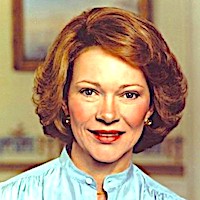
Rosalynn Carter
1927 – 1923 CE
Insightful and compassionate politician
Oldest living First Lady, author of 5 books, strong supporter of equal rights, and active member of the Carter administration; Rosalynn Carter disdained the role of traditional First Lady and was criticized by members of her own party who believed “women are meant to be kept at home and that's all." Instead, she broke the molds confining presidents’ wives to being only official hostesses. For only the second time in history for a First Lady, she appeared before Congress to testify, in this case for a new Mental Health System bill. A strong voice against Ronald Regan who she believed was ruining the country, she promoted peace in Israel, human rights in Brazil, help for refugees from Pol Pot, and Habitat for Humanity. Not afraid to disagree with her husband on policy issues, she actively disagreed and argued with him during his time as president and up to recent times disagreeing with him about Russian interference in the 2016 election.
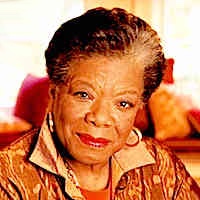
Maya Angelou
1928 – 2014 CE
From a background that included working as a nightclub dancer, fry cook and sex worker; Angelou climbed to becoming the first poet to recite for a Presidential inauguration since Robert Frost. She worked directly with Martin Luther King Jr., Malcolm X, and other Civil Rights leaders, received 50+ honorary degrees, dozens of literary awards, and the Presidential Medal of Freedom. An important spokesperson for women and black people, her books are both subject to bans in libraries as well as being extensively used in universities around the world. “America's most visible black woman autobiographer,” her books and poetry both defended and appreciated Black culture, became a powerful influence on modern hip-hop music, and helped further gender and racial understanding.
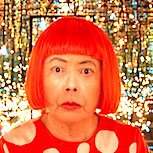
Yayoi Kusama 草間 彌生
1929 CE –
Yayoi Kusama 草間 彌生 (1929 - )
One of the Top 10 Living Artists, 2014’s most popular artist of the year, precursor and inspiration to Andy Warhol and the pop art movement, film writer/start, published novelist and poet named the most popular living artist; almost 90-year-old Yayoi Kusama set a record for a female artist when one of her works sold at Christie’s in New York for $5.1 million. During the counterculture’s 1960s, she organized a series of events that included naked, brightly painted withpolka dots participants. One of the world’s most important voices for the avant-garde, she has lived in a Japanese mental institution since 1973 creating hallucination-inspired “infinity nets” while organizing some of the world’s most popular art exhibitions. After creating art every day for over 70 years, she says she’s feeling “as creative as ever,” that “my mind is full of paintings,” and “I, Kusama, am the modern Alice in Wonderland.”

Audrey Hepburn
1929 – 1993 CE
She wasn’t that beautiful really, not sexy, an okay actress but not exceptional; what made Audrey Hepburn so popular was her deep goodness as a person. A wise and thoughtful humanitarian, she was active in the Dutch resistance during World War II, nominated for 7 Academy Awards, won twice and is one of only a few people who won Academy, Emmy, Grammy, and Tony Awards. She became the Goodwill Ambassador of UNICEF and devoted years working in some of the poorest communities of Africa, South America and Asia. Her movies continue to uplift, inspire, and improve the lives of millions of people.

Ursula Le Guin
1929 – 2018 CE
At an early age, Le Guin saw her father making notes in an old book. In this way she discovered Lao Tzu who became a lifelong teacher and companion. Her father, a famous cultural anthropologist also exposed her to the native American shamanistic traditions. This led to a prolific and influential literary career with works translated into 31 languages and winning 21 Locus, 6 Nebula, 5 Hugo, a Newbery and World Fantasy, many “year's best” and other awards. Not just entertaining, these books challenged and positively shaped modern views on race, gender, society and the environment.
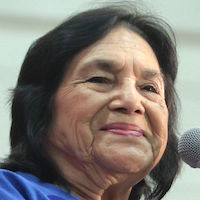
Dolores Huerta
1930 CE –
Champion for workers', immigrants', and women's rights; labor leader and civil rights activist; co-founder of an organization that became the United Farm Workers (UFW); Huerta was the first Latina inducted into the Women's Hall of Fame and received both the Eleanor Roosevelt Award for Human Rights and the Presidential Medal of Freedom. In 1988 her severe beating (necessitating spleen removal in emergency surgery) by police during a peaceful protest was caught on videotape and resulted in change SFPD crowd control policies and a huge settlement that she used to benefit farm workers.A frequent subject for murals, ballads, and the names of schools; she was on stage with Robert Kennedy just before his assassination, in 2008 formally placed Hillary Clinton's name into nomination, and was honorary co-chair of the 2017 Women's March on Washington. Though almost 90, she continues to work through her foundation on health, environment, education, and economic development. (picture at age 86)
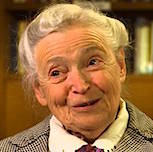
Mildred Dresselhaus (“the Queen of Carbon”)
1930 – 2017 CE
Growing up impoverished in a dangerous, multiracial neighborhood where teachers in the schools spent most of their time disciplining with little time for teaching; Dresselhausbecame M.I.T.’s first woman full professor, organized their first Women’s Forum, worked hard to encourage more women in science, and now 22% of M.I.T.’s faculty are women. Winning numerous awards including the Presidential Medal of Freedom and a pioneering researcher into the many uses of “buckyball” carbon atoms, she wrote over 1700 scientific papers, co-wrote 8 scientific books, helped discover many new scientific advancements including her research that developed the nonotube - something as strong as steel but one 10,000th the width of a human hair.

Gesshin Myoko Roshi
1931 – 1999 CE
Moon heart miraculous light
Rinzai Zen master as a girl known by Adolf Hitler who thought she was the perfect Aryan but whose family escaped to California; Gesshin Myoko (moon heart miraculous light) studied and taught Japanese and Vietnamese Zen. Painter, poet, calligrapher, and mystic from an early age; she led a life filled with spontaneous intuition and insight that led to meeting Sasaki Rōshi, becoming his disciple, helping him start thriving Zen centers, and becoming the head teacher. She later felt this approach was too severe and not appropriate for western students and developed her own Zen forms not tied to a particular culture, tradition or time period; but instead, connected with the particular students and environment involved.
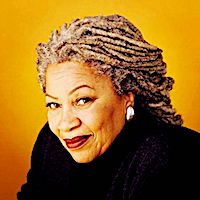
Toni Morrison (Chloe Ardelia Wofford)
1931 – 2019 CE
Story-telling voice of American wisdom
Novelist, professor, and essayist; Toni Morrison became Random House's first black woman editor. She consistently and insightfully addressed issues like race, feminism, white supremacy, and politics without fixating on extremes and while always keeping on open view. She won the Nobel Prize in Literature, the Pulitzer, the National Book Critics Circle Award, the American Book Award, and she was chosen for the Jefferson Lecture—the U.S. government's highest honor for accomplishment in the humanities. President Barack Obama presented her with the Presidential Medal of Freedom

Yoko Ono 小野 洋子 (“Ocean Child”)
1933 CE –
The daughter of one of Japan’s richest banking clans in a long lineage of samurai warrior scholars; Yoko One fell from attending exclusive schools in New York and Japan to begging for food with all the family possessions in a wheelbarrow. A true, faithful life-artist, she collaborated with John Lennon’s public protests against the Viet Nam war, co-wrote ”Give Peace a Chance” inspired many famous songs, and was the only woman to sing a lead vocal on a Beatles’ recording. Continuing her life as “the world's most famous unknown artist,” she’s extended John Lennon’s legacy of political and social activism, philanthropy, and influence on world culture.
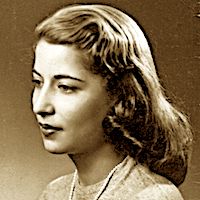
Ruth Bader Ginsburg
1933 – 2020 CE
Fierce and influential voice for justice, equality, and women's rights
Second female Supreme Court Justice, professor, "pop culture icon,” champion of gender equality and women's rights; Ginsburg became a fierce and influential voice on the direction of US law. The first Justice to officiate a same sex-wedding, her work led to ending gender discrimination in many areas and extended the Constitution’s Equal Protection Clause to women. Without neglecting her Supreme Court work, she’s struggled through the death of a husband, heart surgery, colon. and pancreatic cancer. To stay healthy and continue her work, she found a personal trainer, started working out, and at 80 could still do 20 full push-ups. Named one of the world’s 100 Most Powerful Women in 2009, “Women of the Year” in 2012, and one of Time’s “100 most influential people” in 2015; her influence continues.
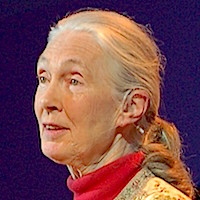
Jane Goodall
1934 CE –
Adventurer, environmental activist, scientist, pioneering primatologist, and wise gardener; Jane Goodall became UN Messenger of Peace, the world's best expert on chimpanzees, founder of the Roots & Shoots program, and an important influence on young people to choose helping the world over selling out to lucrative careers that plunder the planet. Criticized for changing the chimpanzee social group dynamics, she became an example of McLuhan’s dictum that “every new technology requires a new war” because it disrupts the status quo social order. In this case, the disruption went beyond the chimpanzee social order and also disrupted the human-to-animal and human-to-plant hierarchies. As Stevie Nicks describes her in the song Jane, “There are angels here on earth.”
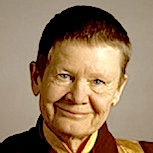
Pema Chödrön (Deirdre Blomfield-Brown)
1936 CE –
First American Vajrayana nun
Growing up on a New Jersey farm, studying elementary education at UC Berkeley in the 1950’s, and having a family life with two divorces and two children; Pema Chodrin came to Chögyam Trungpa and Tibetan Buddhism from a status-quo American background. From this ground, she became the first fully ordained American nun in the Vajrayana tradition, the first director of the first Tibetan Buddhist monastery in North America, and one of the most respected teachers in today’s world. Her 16 books, regular teaching and practice seminars continue to spread deep wisdom and authentic compassion.
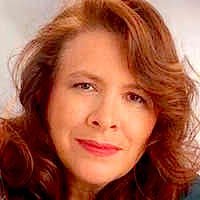
Jean Houston
1937 CE –
Visionary thinker, philosopher, scholar, historian, and author of 26 books; Jean Houston was trained by Teilhard de Chardin, Eleanor Roosevelt, as well as her father who was Bob Hope’s main comedy writer for 35 years, She’s an active consultant to leaders of 25 countries, worked with the United Nations and UNICEF in more than 100 countries, and helped Hillary Clinton write her book, It Takes a Village. She participated in LSD research before it became illegal and is considered one of the main founders of the Human Potential movement. Her friend and mentor Margaret Mead lived with her the last few years before she died and another lifelong friend, Buckminster Fuller said her “mind should be considered a national treasure.”
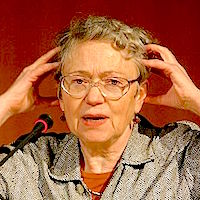
Mary Catherine Bateson
1939 CE –
“ Dr. Spock’s first baby,” daughter of Margaret Mead and Gregory Bateson, and after having “the best-documented childhood in the United States,” Mary carried on her parents’ intellectual and anthropological tradition writing and teachings in places like Harvard, George Mason University, and Amherst as well as leading organizations like the Institute for Intercultural Studies in New York. When a freshman in college after attending one of her mother’s lectures with a boyfriend, she lamented the possibility of ever having a good marriage after her mother and father’s example; she agreed to an engagement and wound up married to that same boyfriend for over 50 years.
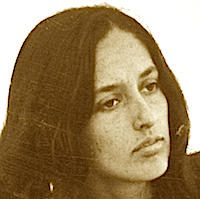
Joan Baez
1941 CE –
Famous but down-to-earth, proud but self-deprecating, a powerful speaker of truth to power; Joan Baez helped launch the civil rights and anti-war movements, social justice on multiple fronts including nonviolence, the environment, and human rights in general. A leader of the dynamic, counterculture social and political change of the sixties, she influenced the direction of American politics and world culture. For 60+ years, recording 30+ albums and songs in 8+ languages; her message of peace, compassion, and justice spread throughout the world both through her own direct example and through her relationship-with impact on people like Bob Dylan, David Harris, and Steve Jobs.
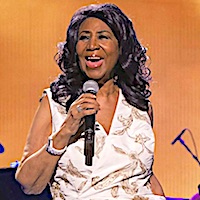
Aretha Franklin
1942 – 2018 CE
“Greatest Singer of All Time”
Dominant spirit of American music, Rolling Stone’s “Greatest Singer of All Time,” Queen of Soul, 1st Rock & Roll Hall of Fame woman singer, powerful and influential voice for Equal Rights and Social justice; Aretha Franklin’s legacy runs deep in both American and World culture. Beginning with her 1st album when only 14 years old, she went on to record 112 charted songs, 18 Grammys, and 17 top ten singles. Growing up and helping her famous father, mesmerizing preacher Rev. C.L. Franklin who recorded dozens of inspiring sermons treasured by blacks and creative spirits across the country, she knew and supported Martin Luther King from an early age. With a challenging life including having her first child when only 12 years old, her second when 14, a marriage filled with domestic violence, and her father being shot in his home at point blank range; her soul-empowering suffering continued in struggles with alcoholism, obesity, and various health issues. Not letting her tribulations stop her, she continued to spread her inspiration and was honored with degrees from Harvard, Princeton, Yale, Brown, and many other universities.
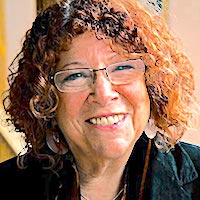
Meg Wheatley
1944 CE –
Bringing ancient wisdom into the modern world.
Global citizen, author, and management consultant who brought contemplation, systems thinking, chaos theory, and a natural science approach into the business world; Wheatley has had a powerful influence over organizations from schools to churches, from non-profits to governments, from major corporation to small, developing country start-ups. Working on every inhabited continent, more than 40 countries, and with every type of organization; she’s helped and inspired fruitful changes creating better organizations, societies, and work-place interactions. A student of Pema Chödrön and Namkhai Norbu, she’s one of the most interesting examples of bringing ancient wisdom into the modern world.
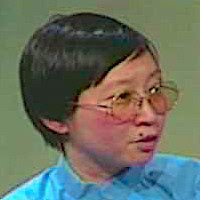
Eva Wong
(c. 1951- )
Champion of Qigong, Fengshui, and a Taoist approach to health and healing
Born in Hong Kong and growing up hiking and meditating in the mountains of the New Territories, Eva Wong connected with Taoism at an early age and became a translator and author of many books on Taoist arts, qigong, and fengshui. She began studying Tibetan Buddhism when only 7 years old and is the 19th generation lineage carrier of Xiantianwujimen Taoism (the Pre-celestial Limitless Gate School). She practices several Chinese Fengshui systems and consults on applying these principles for personal homes, commercial sites, and spiritual centers. In this tradition, she also specializes in qigong, divination, and the I Ching. Taking to heart the Taoist principles of simplicity, anonymity, and selflessness; she insists she is not a teacher, doesn’t publish pictures of herself, and doesn’t give out personal details like her birth date.
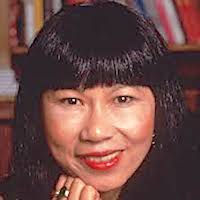
Amy Tan
1952 CE –
Rock and roll singer, bartender, and insightfully talented author
Rock and roll lead singer (in a band with Stephen King and Dave Barry), carhop, bartender, pizza maker, and insightfully talented author; Amy Tan has given the world memorable characters and a blended, wise view of world culture. A vivid example of how intense problems can transform into the evolution of goodness and wisdom, she had faced and transmuted challenges arising from a domineering, suicidal mother who once held a knife to her throat threatening to kill her, the murder of a college roommate, serious depression, and misdiagnosed Lyme disease that led to epileptic seizures. Exemplifying Einstein’s quote, “Great spirits have always encountered violent opposition from mediocre minds,” critics have accused her of perpetuating racial stereotypes, pandering to Western prejudices, and “casting Chinese men in the worst possible light.” If no negative reaction to a work of literature, it’s probably very insipid, meaningless, and not worth the time reading.

Benazir Bhutto بينظير ڀُٽو;
1953 – 2007 CE
“Iron Lady,” 11th Prime Minister of Pakistan, first woman to head a Muslim majority nation; Benazir Bhutto studied at Harvard in the USA and Oxford in the UK, became a symbol of women's empowerment in Islamic countries as well as a small but bright light shining on the possibility of peace between Islam and the West, democracy in Muslim countries, and the ending of Islamic extremism. Assassinated but now honored by the Pakistani government, her legacy includes almost all Pakistani political parties allowing women full participation in their organizations and elections, support programs for the poorest Pakistanis, and inspiration for young activists like Malala Yousafzai.
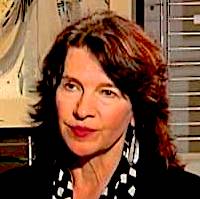
Louise Erdrich
1954 CE –
Chippewa wisdom-storyteller, poet, writer of 15 best-selling novels, Pulitzer Prize finalist, and World Fantasy Award winner; Louise was part of the first class of women admitted to Dartmouth College. A powerful voice for both Native American wisdom and rights, she refused an honorary doctorate from the University of North Dakota because of their Fighting Sioux mascot, wrote a novel about an historical lynching of four Native people based on trumped-up charges, hosts writers' workshops on the Turtle Mountain Indian Reservation, started and runs a “teaching bookstore” that also sells Native American jewelry, art and traditional medicines.

Michelle Obama
1964 CE –
An inspiring icon for black women, women and men of all races; Michelle Obama exemplifies quiet courage, dignity, and the deep “Te” described in the Tao Te Ching. Descendant of slaves, daughter of the working class, sister of American educational opportunities, and wife to good government; her influence on American culture is subtle but profound and goes far beyond her focus on poverty alleviation, LGBT rights, promoting good nutrition and healthy life style. Fashion icon on the cover of Vogue magazine and first First Lady to announce the winner of an Oscar; she also advocated for military families. Touring the world, she repaired and uplifted America’s image probably more than anyone since Benjamin Franklin.
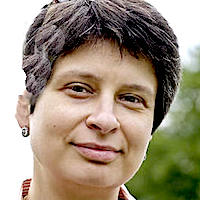
Nina Lvovna Khrushcheva Нина Львовна Хрущёва
1964 CE –
The adopted granddaughter of Nikita Khrushchev and daughter of his biological granddaughter, Nina grew up in the midst of an intense political environment witnessing the rise and fall of Soviet Russia. She saw first hand how Khrushchev was vilified in both Russia and the USA while repudiating Stalin’s legacy of terror and totalitarianism which killed between 30 and 60 million people, releasing millions of Stalin’s victims from gulags, and spearheading reforms that allowed greater political, personal, and artistic freedoms. Now an American Professor of International Affairs, Senior Fellow of the World Policy Institute, and a Contributing Editor to Project Syndicate; she shares her insightful political commentaries in Newsweek, The New York Times, The Wall Street Journal, The Financial Times and in many other publications and boo
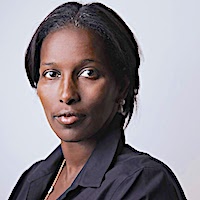
Ayaan Hirsi Ali
1969 CE –
Powerful voice for Islamic reform
Politician, scholar, powerful and effective voice advocating Islamic reform and the rights of Muslim women; Ayaan Hirsi Ali skillfully opposes the far-too-common practices of forced and child marriage, genital mutilation, and violence against women. After growing up as a devout Muslim, she abandoned her faith and became an insightful critic of Islam and the fundamentalist Islamic laws that oppress women. Her movie Submission precipitated an intense reaction of criticism, death threats, and the murder of her co-filmmaker. Both exemplifying and calling for an Islamic Enlightenment, she exposes the deep and debilitating oppression ingrained in Muslim culture and religion as well as articulating and demonstrating a path toward positive reform.
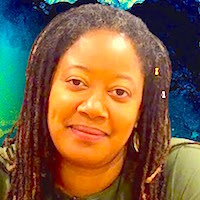
N. K. Jemisin
1972 CE –
Award winning speculative fiction writer, bimonthly column writer for The New York Times, fearless blogger, psychologist, and first black writer to win a Best Novel Hugo award; Jemisin helps mythologize current event themes in her fiction and carries these messages into the political and social worlds. Though arguably a stretch to include her in our Women of Wisdom Lineage, she’s still young and obviously on the way in that direction. Pointing out that 10% of the SFWA (Science Fiction and Fantasy Writers of America) members voted for alt-right writer Theodore Beale (Vox Day), she called him "a self-described misogynist, racist, anti-Semite, and a few other flavors of asshole” which led to him calling her an “ignorant savage" and his expulsion from the SFWA.
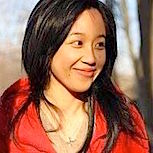
Yi-Ping Ong
1978 CE –
Yi-Ping Ong (c. 1978 - )
Johns Hopkins Assistant Professor, moral and political philosopher, author, human rights activist, and NGO volunteer director; Yi-Ping Ong helped republish the Charles Muller’s translation of the Tao Te Ching and added insightful notes on the chapters, the historical context, and the influence on both Chinese and world culture. A short story she wrote was chosen as one of the 100 Distinguished Stories of 2003 and her Ph.D. dissertation received a major Harvard University award. Although an academic who attended Columbia, Oxford, and Harvard Universities and is now a university professor; her groundedness in the simplicity of Lao Tzu’s vision seems to maintain an allegiance to the sense over the words, reality over ambition, and wu wei over dualistic gaining ideas.

Juno Mac
1990 CE –
Compelling Prostitution Advocate
Juno Mac is a pseudonym for a woman who became a prostitute in 2010 when she was 20 years old. Along with her friend, "Molly Smith," she became active in the movements to decriminalize prostitution and improve prostitute's legal rights. They describe the problems associated with prostitution as basically problems with capitalism and how cultural attitudes toward sex workers hide our deepest cultural anxieties. They criticize feminists for disdaining prostitutes while ignoring "marriage is prostitution." Taking a practical approach to improving conditions, they look at prostitution from a historical perspective and describe sex workers as the original feminists. They challenge critics to change the causes rather than only castigating the consequences.
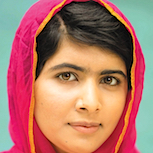
Malala Yousafzai ملالہ یوسفزئی
1997 CE –
Malala Yousafzai ملالہ یوسفزئی (1997 - )
Pakistani activist, the youngest Nobel Prize laureate at 17, "the most famous teenager in the world,” and listed by Time magazine 3 times as one of the world’s most influential people; Malala grew up in a the Swat Valley where the girls were banned from schools. Working hard for the education of women around the world, she was shot by a Taliban assassin in 2012 but thena group of 50 leading Muslim clerics issued a fatwa against the people who tried to kill her. Her book was banned by a 152,000-member Pakistan School Federation and though she is still broadly criticized in Pakistan for being too pro-Western; she didn’t hesitate when meeting with President Barack Obama and his family to challenge the use of drone strikes.
Related Sources (3 sources)
Secret History of the Mongol Queens by Jack Weatherford
Ordinary Wonder by Charlotte Joko Beck
Quotes about the Women of Wisdom Lineage (10 quotes)

“Patriotism in the female sex is the most disinterested of all virtues. Excluded from honors and from offices, we cannot attach ourselves to the State or Government. Even in the freest countries, our property is subject to the control and disposal of our partners, to whom the laws have given a sovereign authority. Deprived of a voice in legislation, obliged to submit to those laws which are imposed upon us, is it not sufficient to make us indifferent to the public welfare? Yet all history and every age exhibit instances of patriotic virtue in the female sex; which considering our situation equals the most heroic of yours [men's].”
Comments: Click to comment

“this homage to women’s attractions has distorted their understanding to such an extent that almost all the civilized women of the present century are anxious only to inspire love, when they ought to have the nobler aim of getting respect for their abilities and virtues.”
Comments: Click to comment
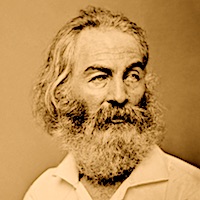
“Behold a woman! The old face of the mother of many children, clearer and more beautiful than the sky. The sun just shines on her old white head. The melodious character of the earth, the finish beyond which philosophy cannot go and does not wish to go, the justified mother of men”
Comments: Click to comment
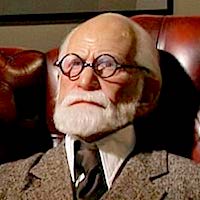
“Man, too, is an animal with an unmistakable bisexual disposition... the characteristics of what is male and female can only be demonstrated in anatomy, and not in psychology.”
Comments: Click to comment
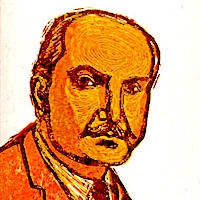
“The human race, in its intellectual life, is organized like the bees: the masculine soul is a worker, sexually atrophied, and essentially dedicated to impersonal and universal arts; the feminine is queen, infinitely fertile, omnipresent in its brooding industry, but passive and abounding in intuitions without method and passions without justice... There is something mysterious and oracular about a women’s mind which inspires a certain deference and puts it out of the question to judge what she says by masculine standards.”
Comments: Click to comment
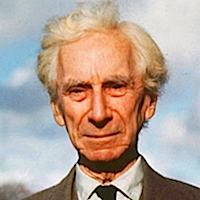
“The religions of Egypt and Babylonia were originally fertility cults… In Babylon, Ishtar, the earth-goddess, was supreme among female divinities. Throughout western Asia, the Great Mother was worshipped under various names. Greek colonists named her Artemis… Christianity transformed her into the Virgin Mary, and it was Council at Ephesus that legitimated the title Mother of God”
Comments: Click to comment

“In all domains of science, art, social work, and government, woman has proved to be capable of reaching the greatest heights when circumstances were favorable... And the many other talented women—actresses, painters, poets, among all nationalities! So many wise leaders, warriors, and great saints among women!”
Comments: Click to comment
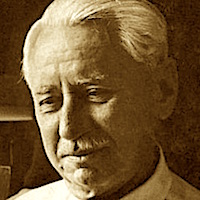
“Let me, before I die, sing a hymn in praise of women... time and again I have longed to approach a woman timidly and thank her for being such a joy to behold... usually they win by instinct all that the male has acquired by intellect... they are all, even if so briefly, miracles of form, features, and alluring grace... No biologist could think of God except in feminine terms.”
Comments: Click to comment
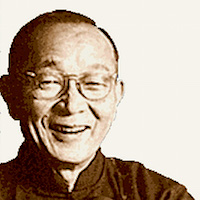
“when we speak of democracy as a way of life and talk of the spirit of democracy, we can talk about 'Chinese democracy'—the idea of government for the people and by the consent of the people, but not government by the people and of the people. While parliamentary government is based on distrust of the ruler, Confucian ideals emphasized moral harmony as the basis of political harmony, laissez faire as the key policy and only one that has ever worked; the Great Chinese empire was always ruled without police depending—not on government or soldiers—but on the self-government of the people.”
Comments: Click to comment
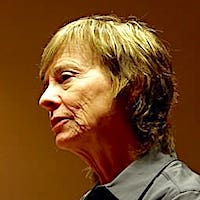
“Contemporary feminism cut itself off from history and bankrupted itself when it spun its paranoid fantasy of male oppressors and female sex-object victims. Woman is the dominant sex. Woman’s sexual glamour has bewitched and destroyed men since Delilah and Helen of Troy.”
Comments: Click to comment
Comments (0)